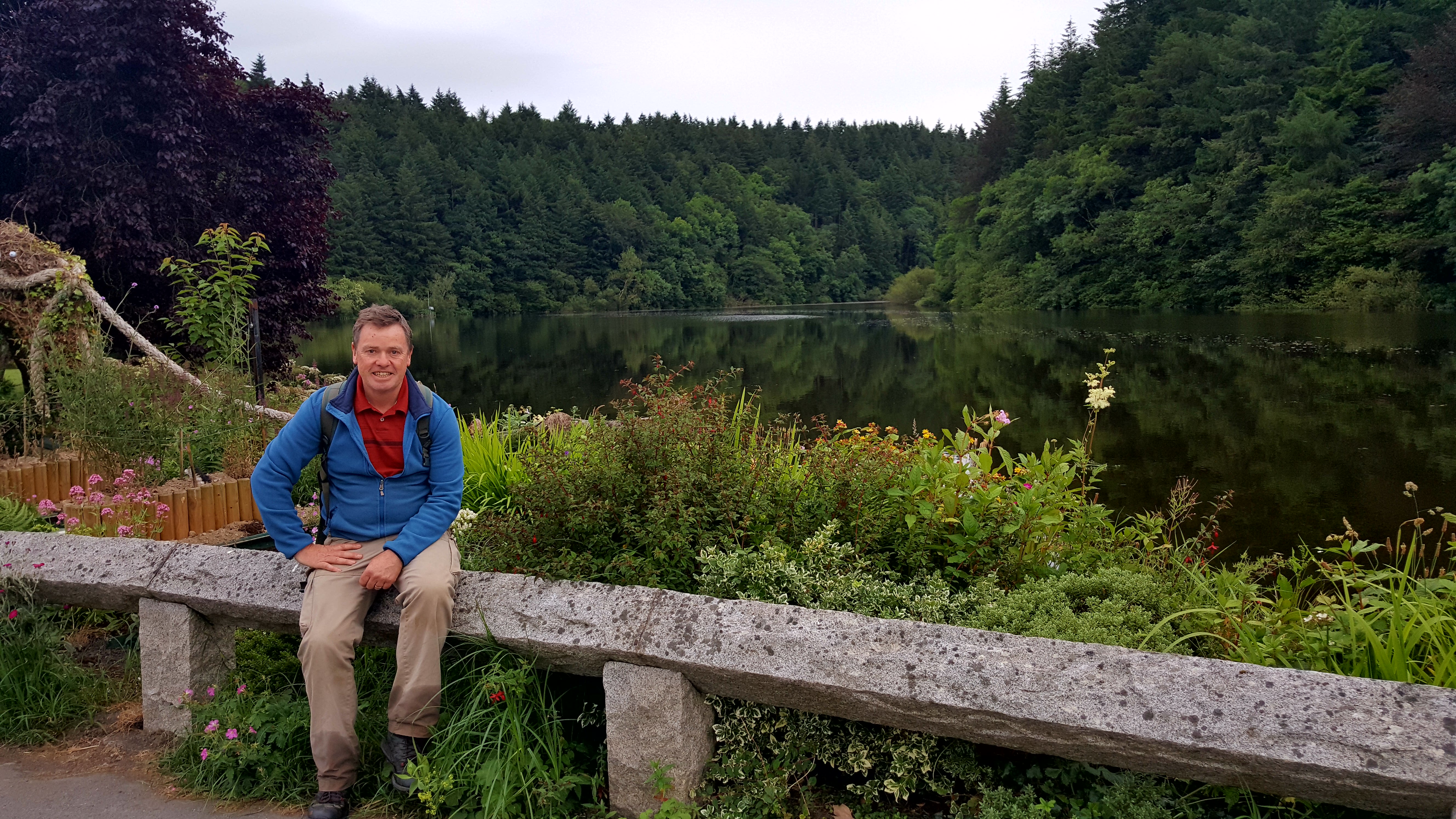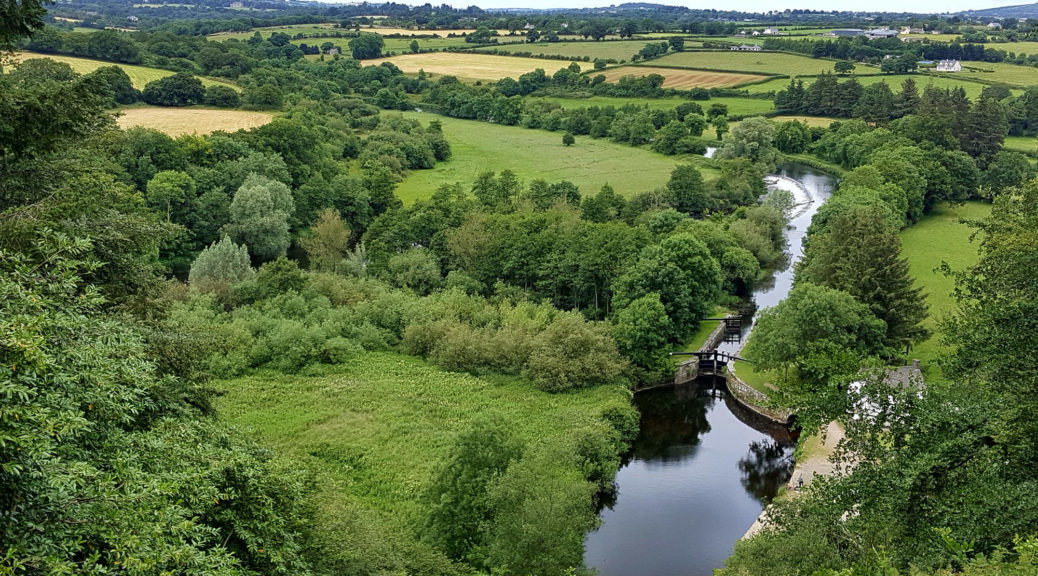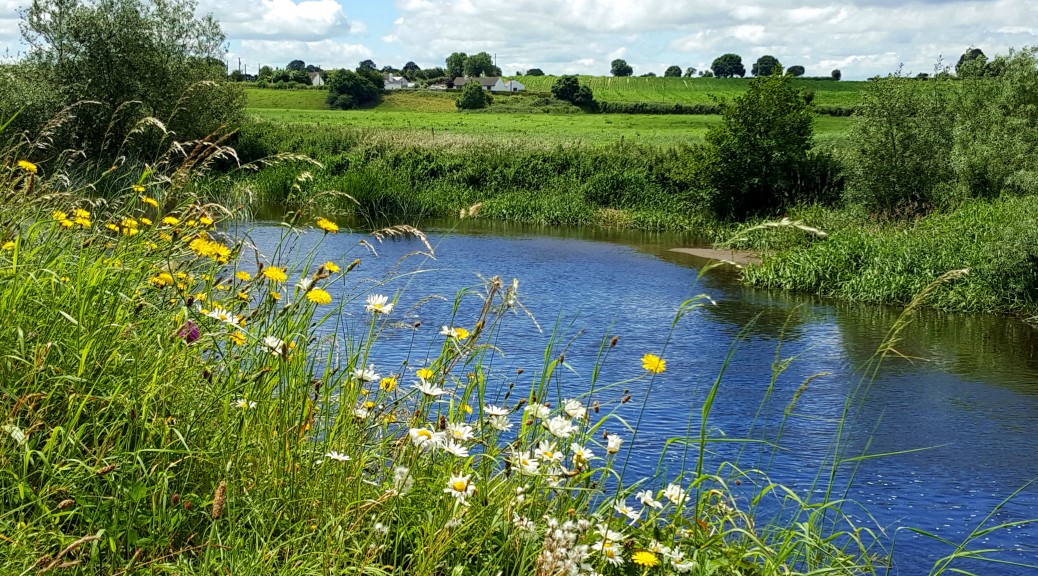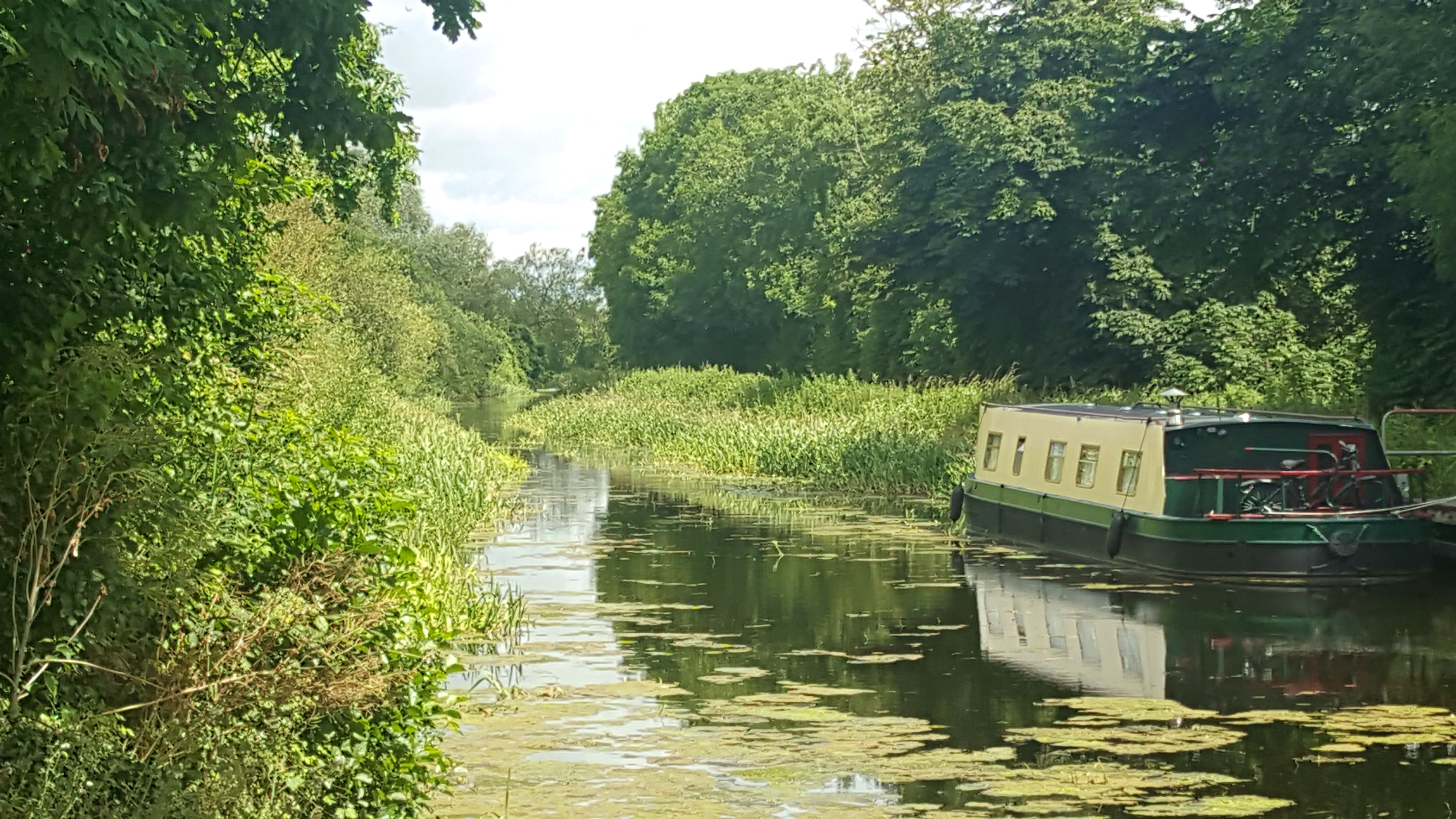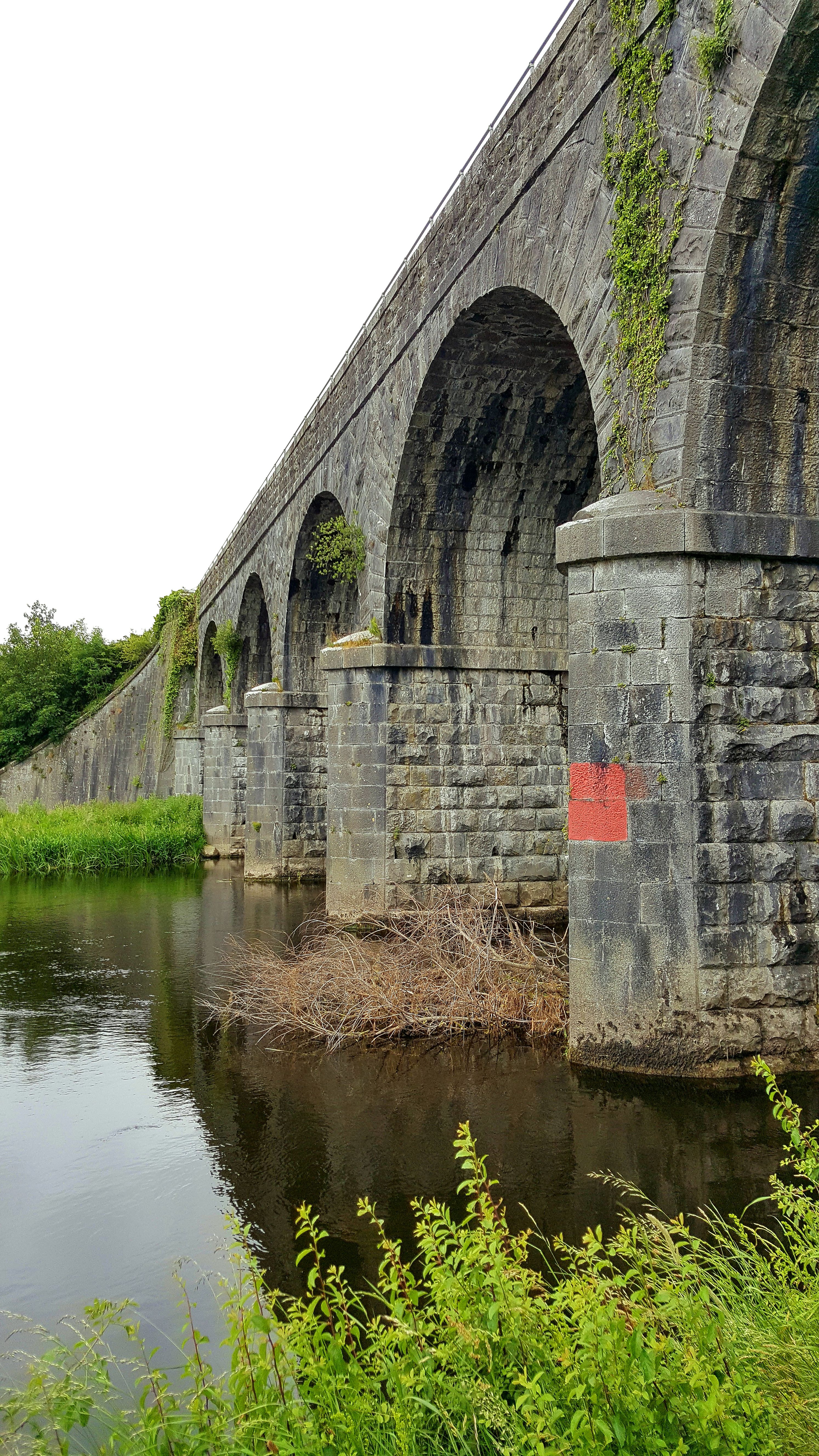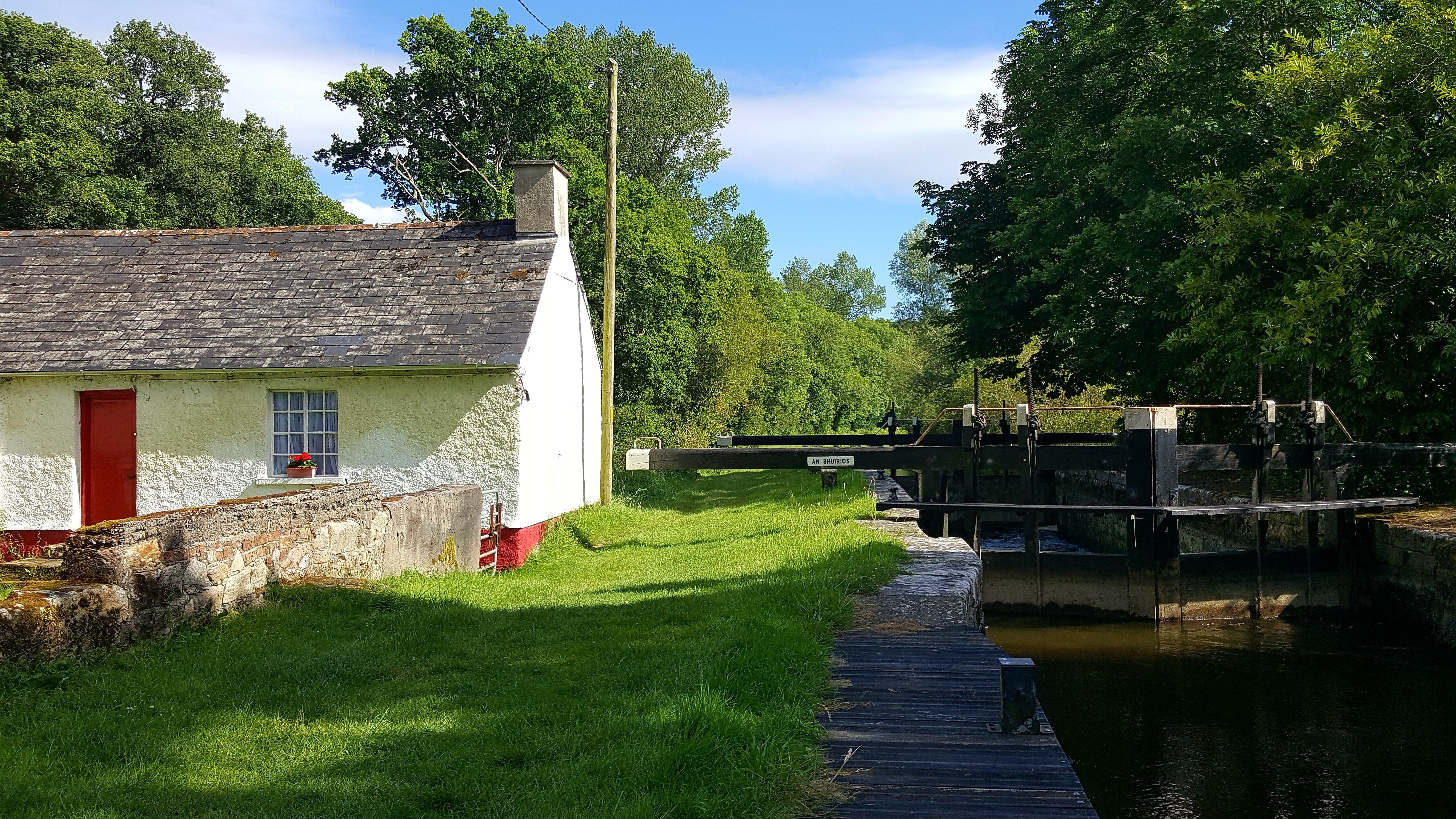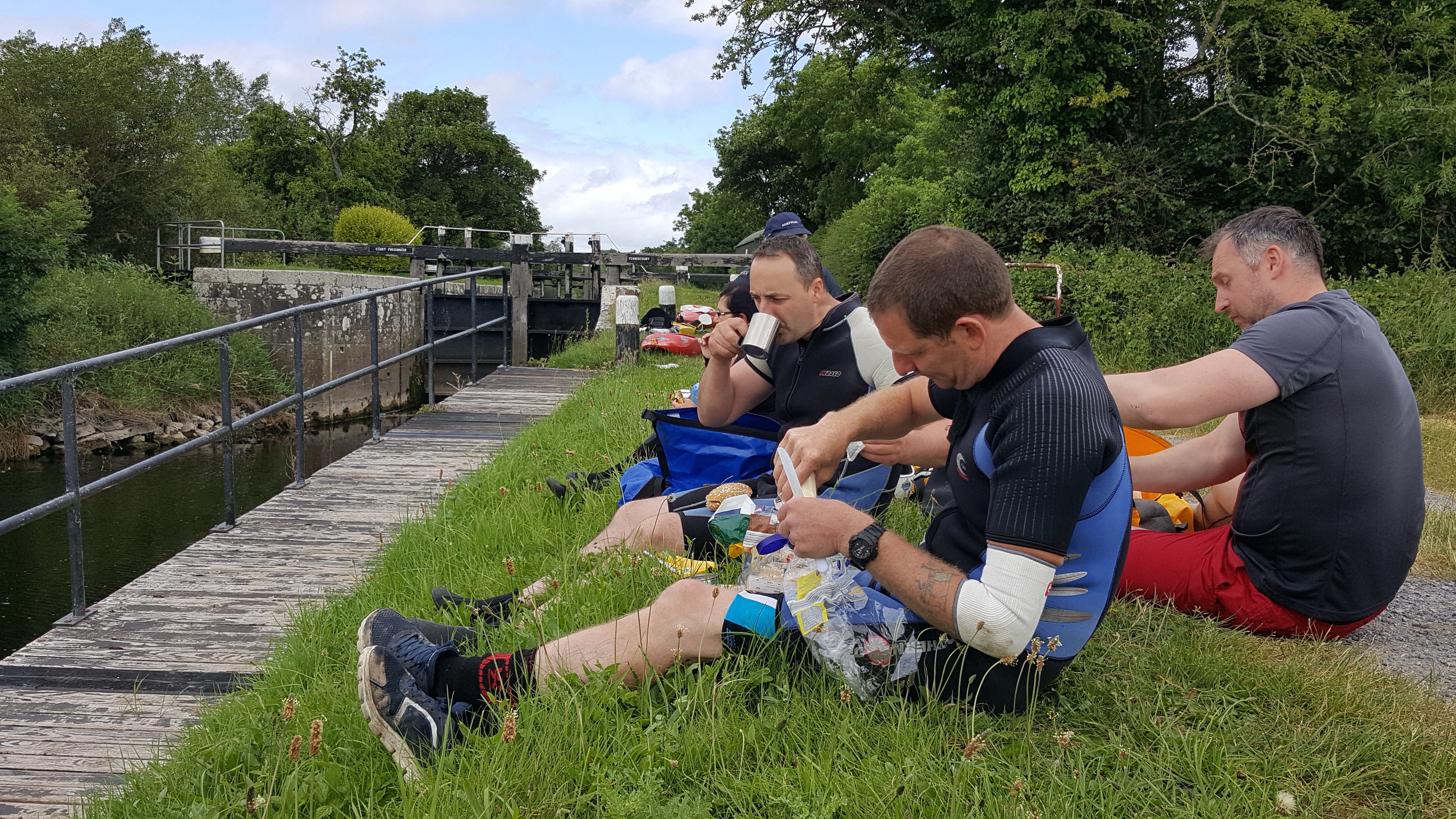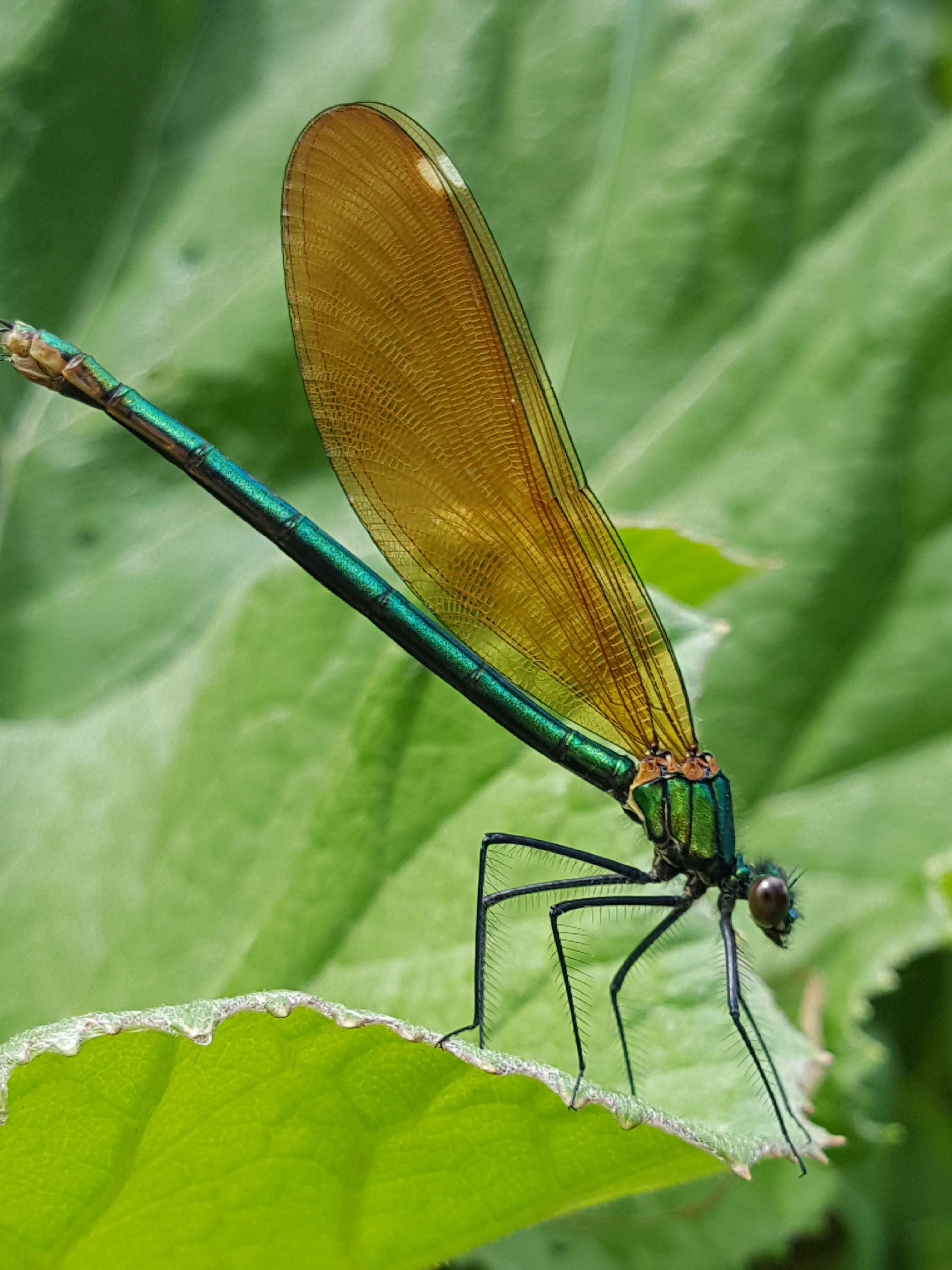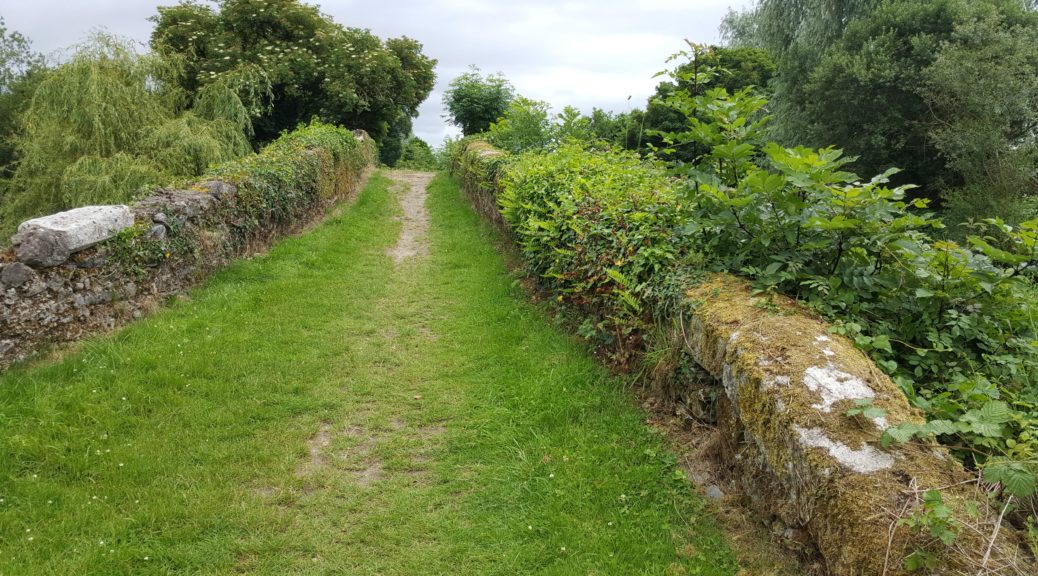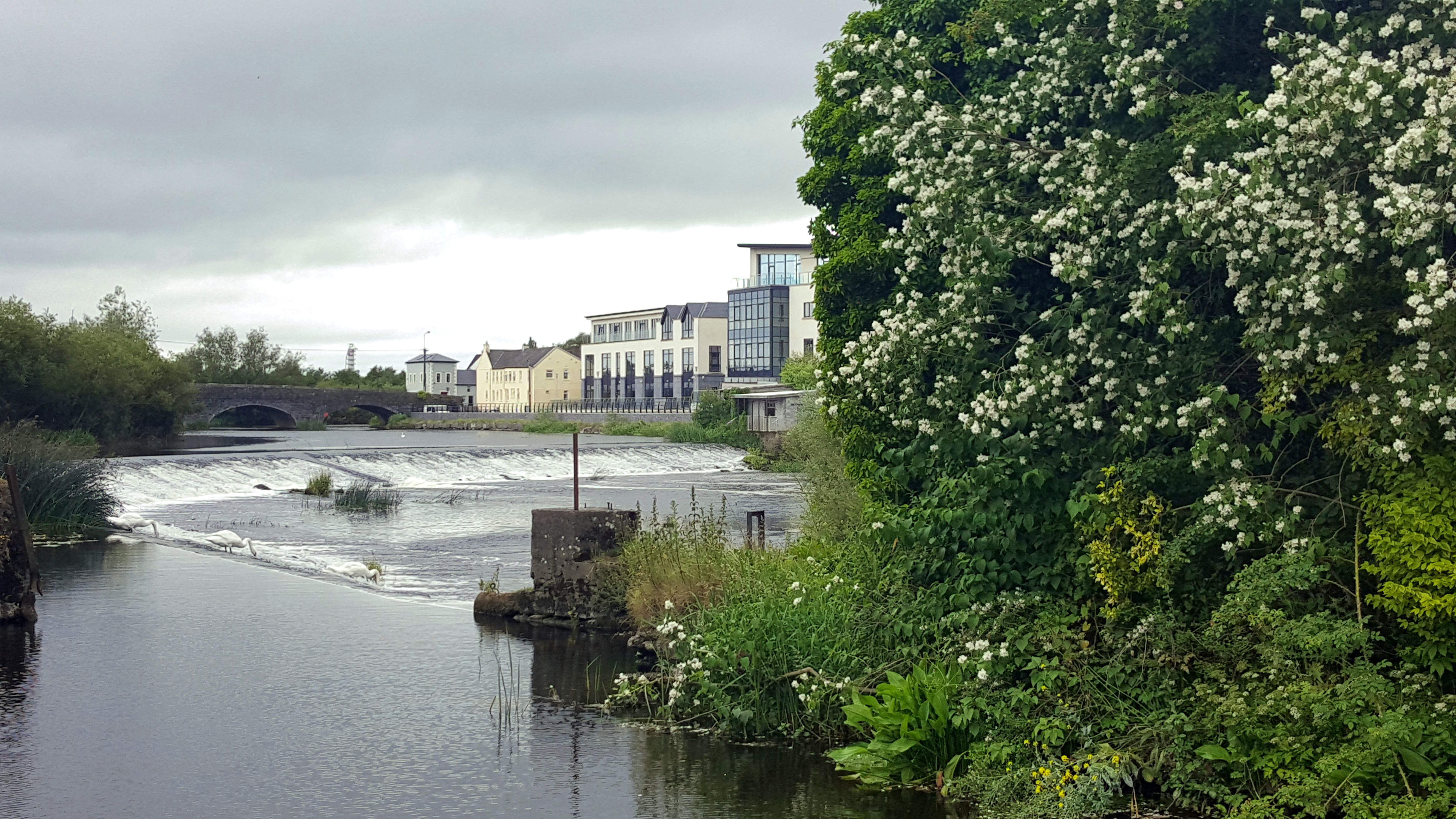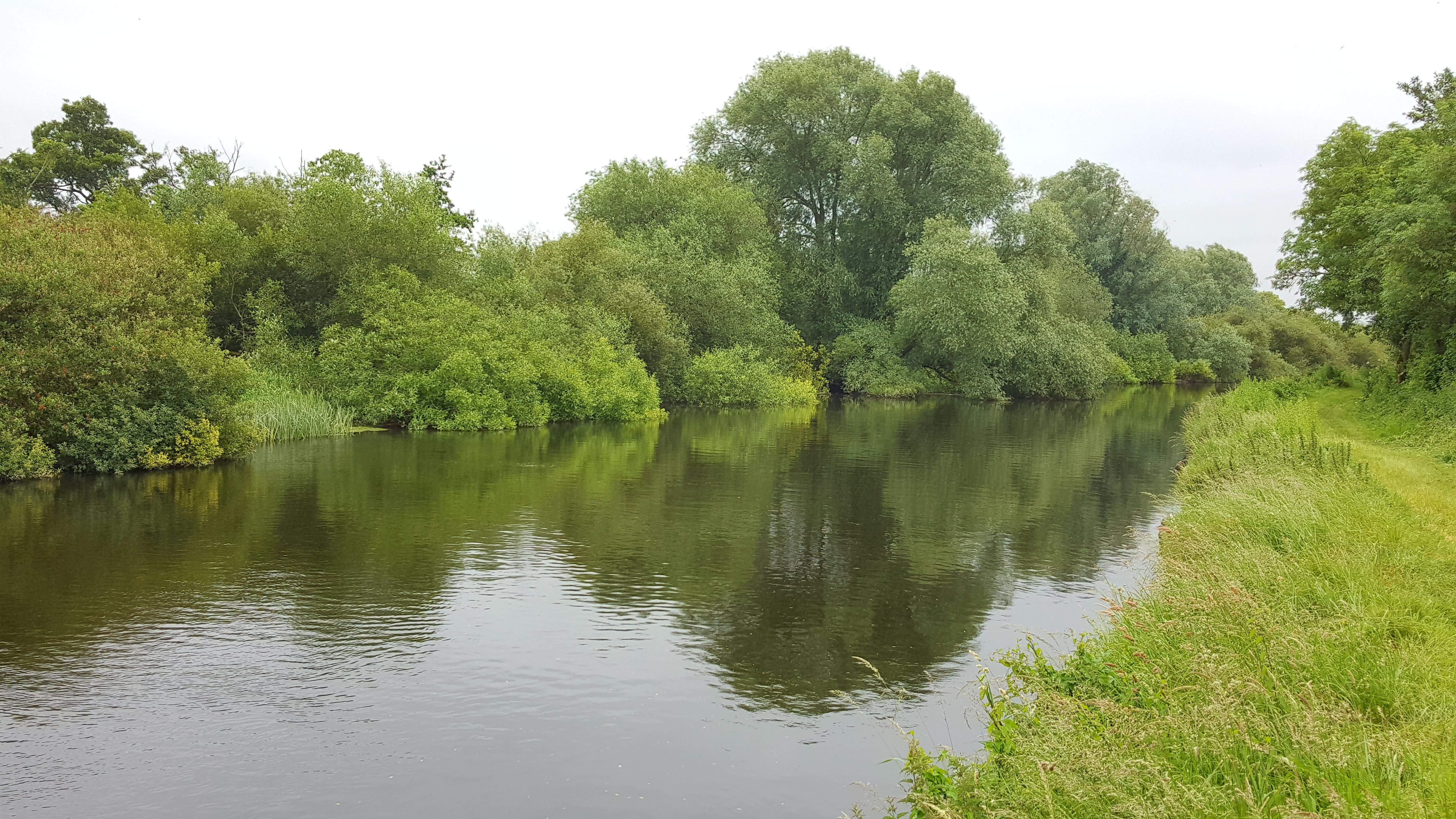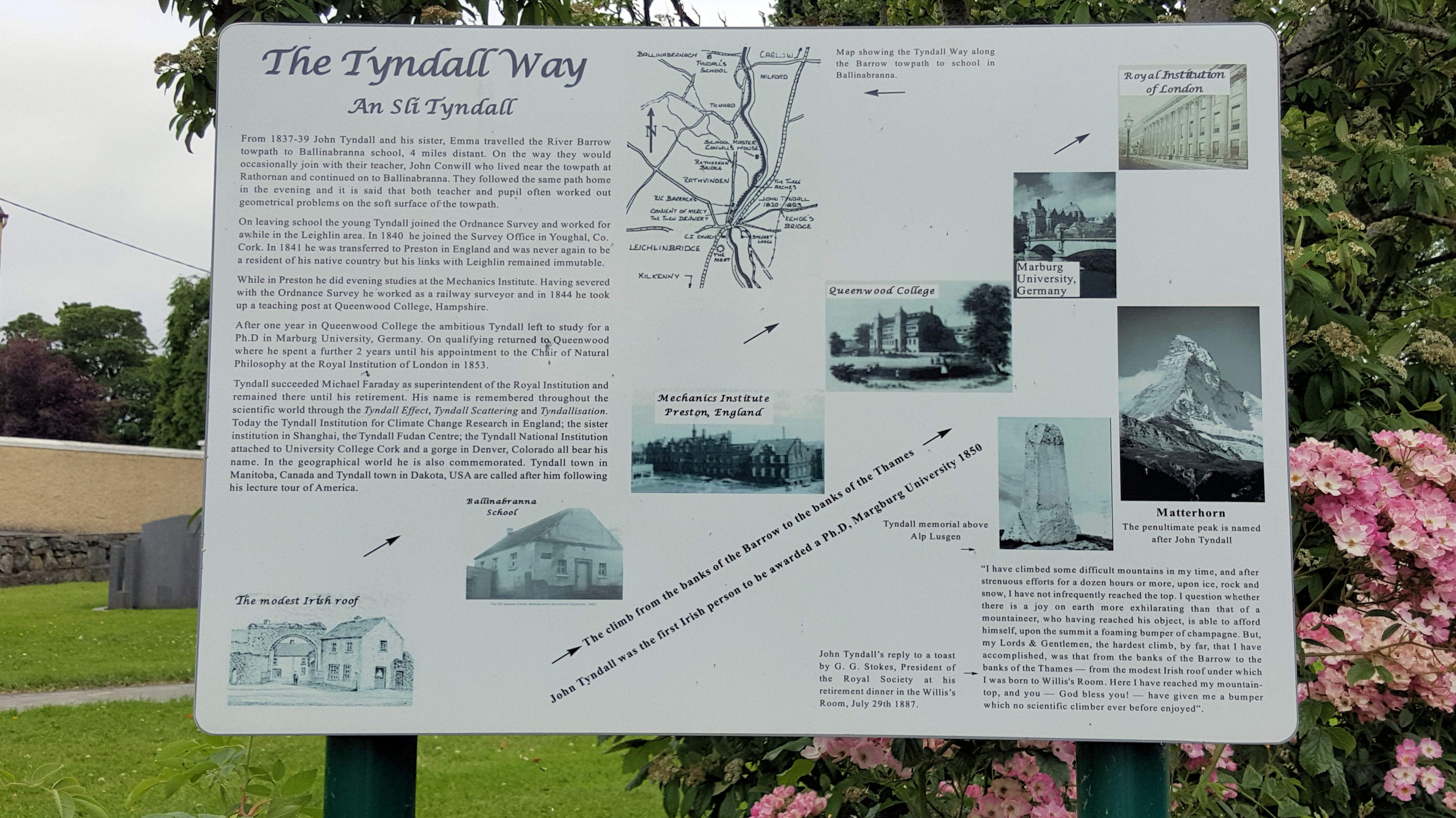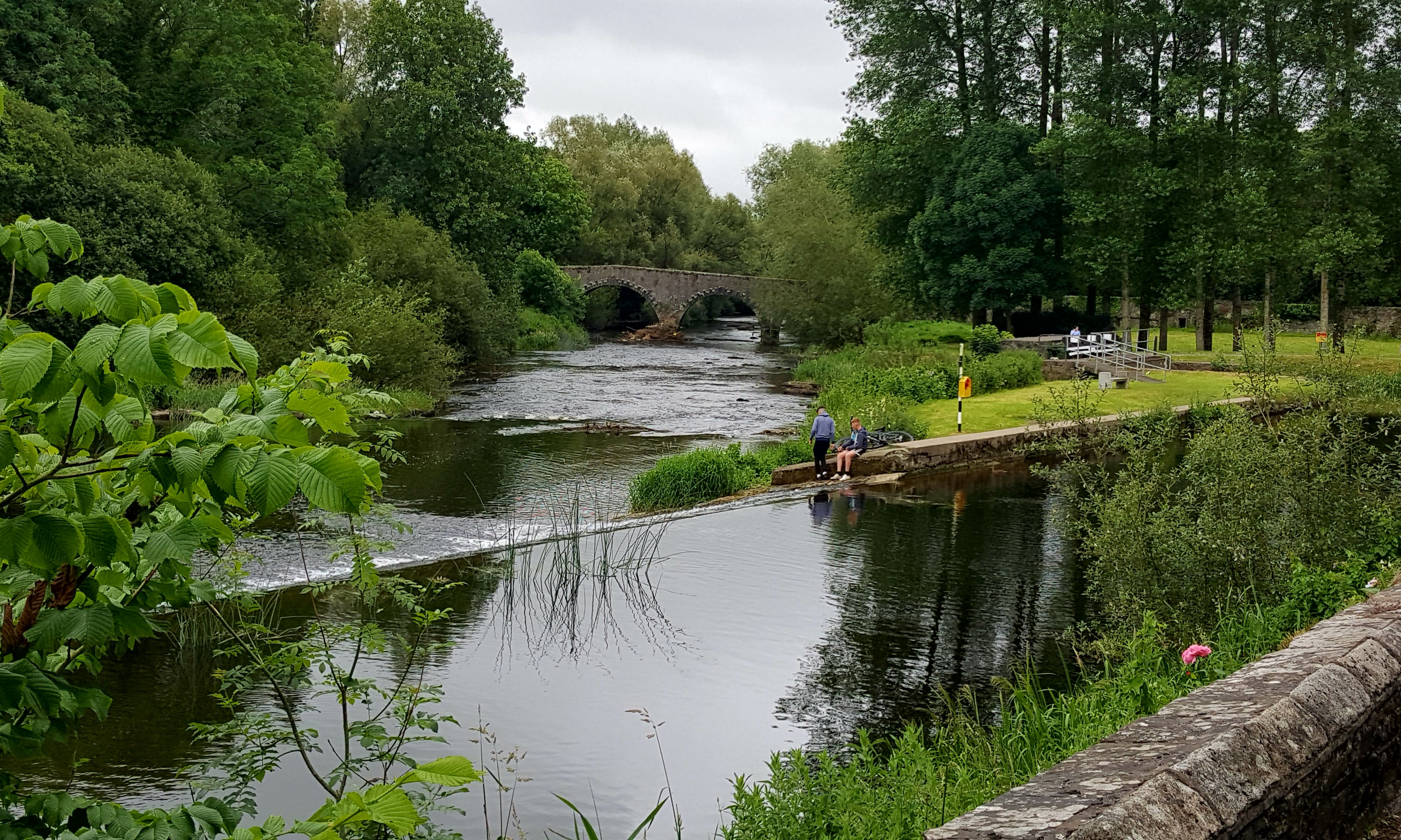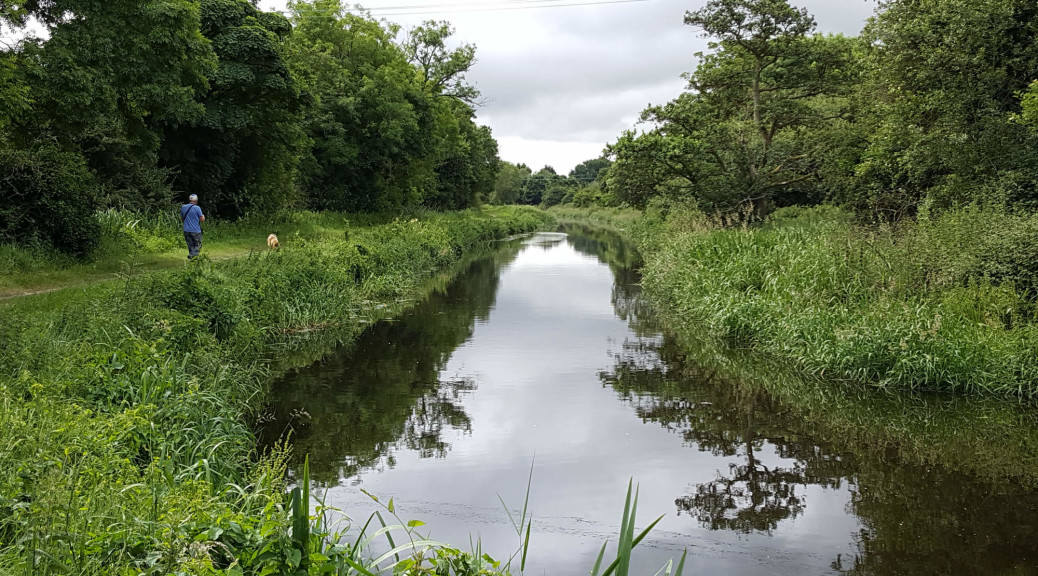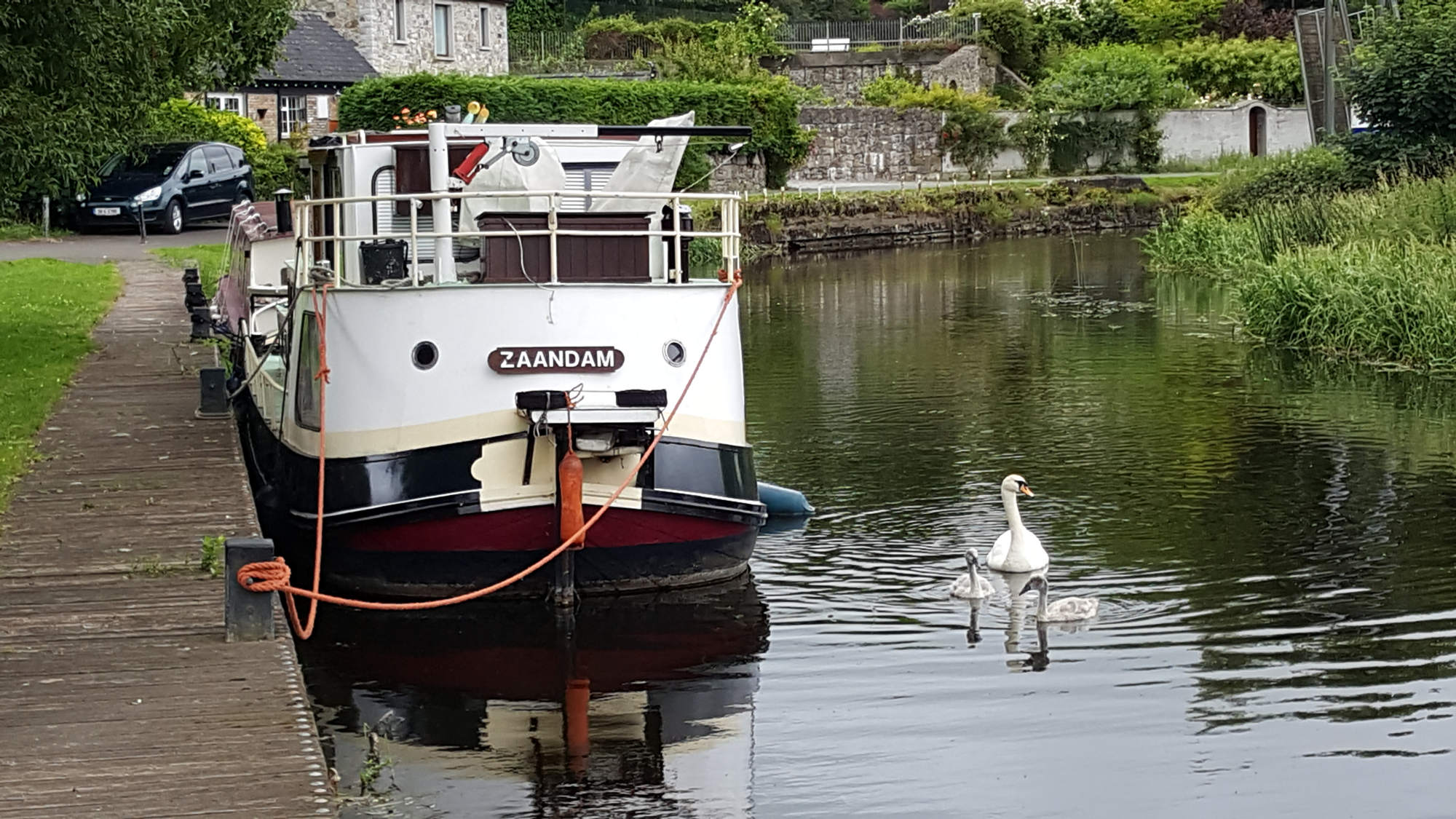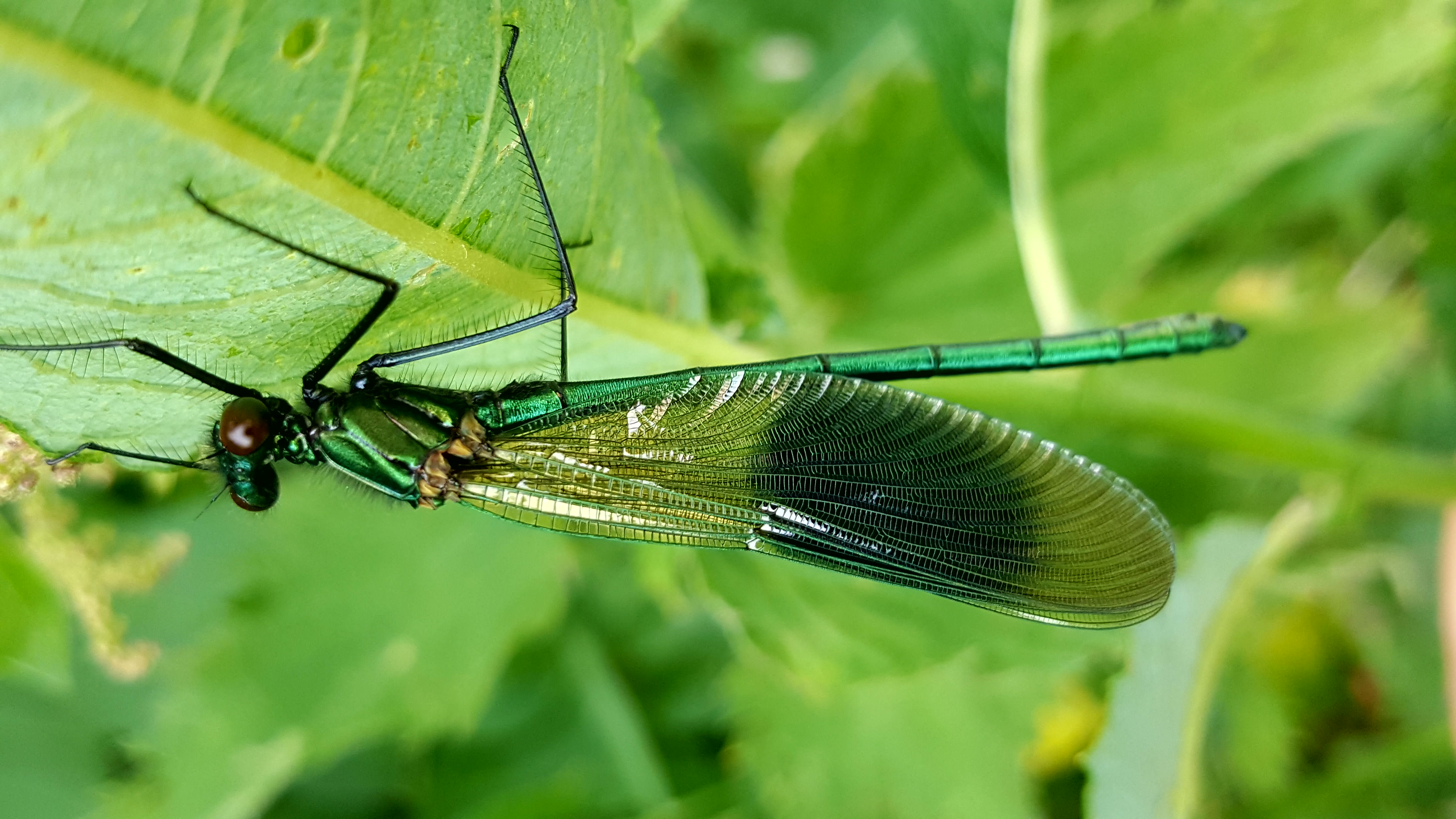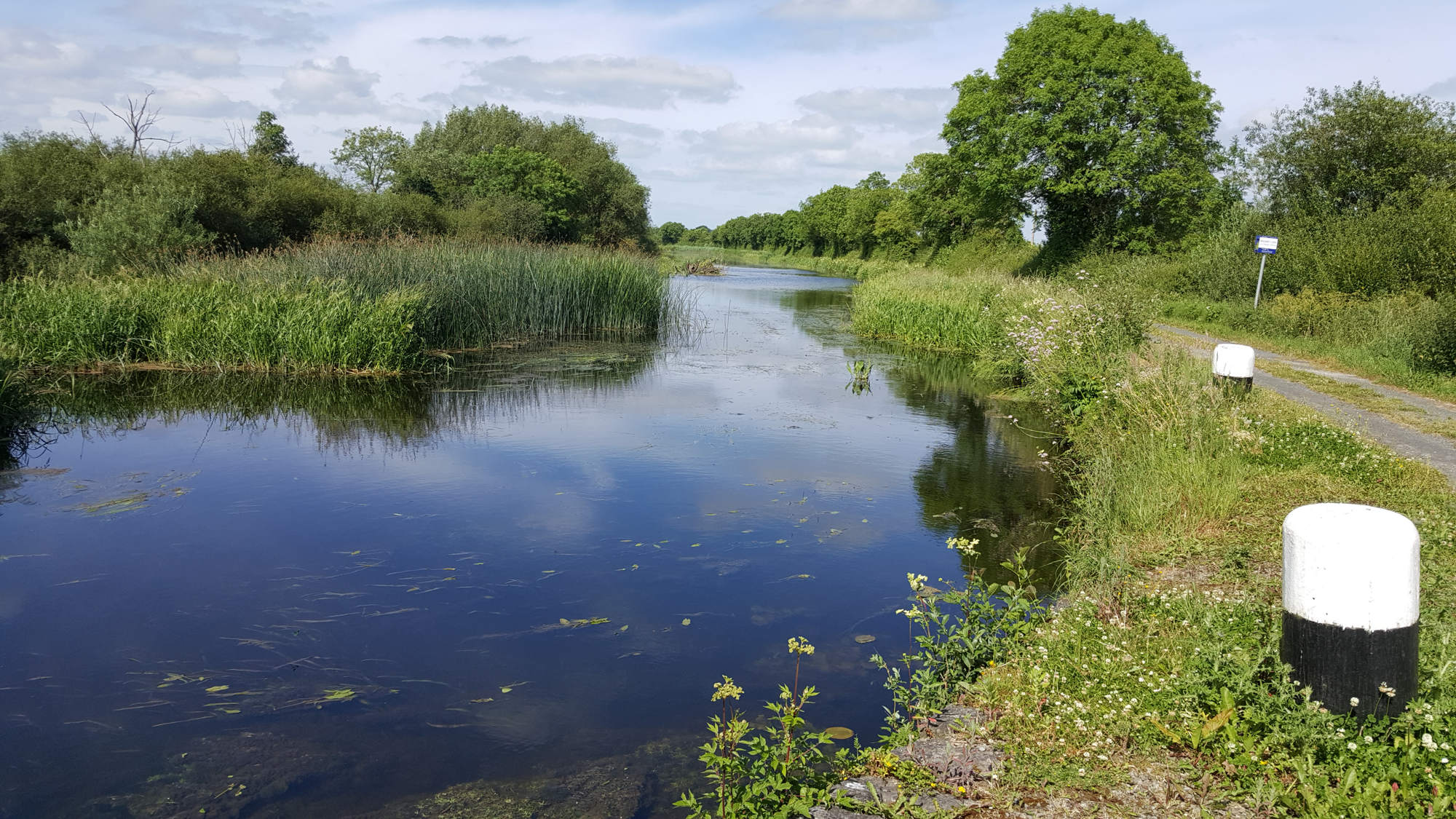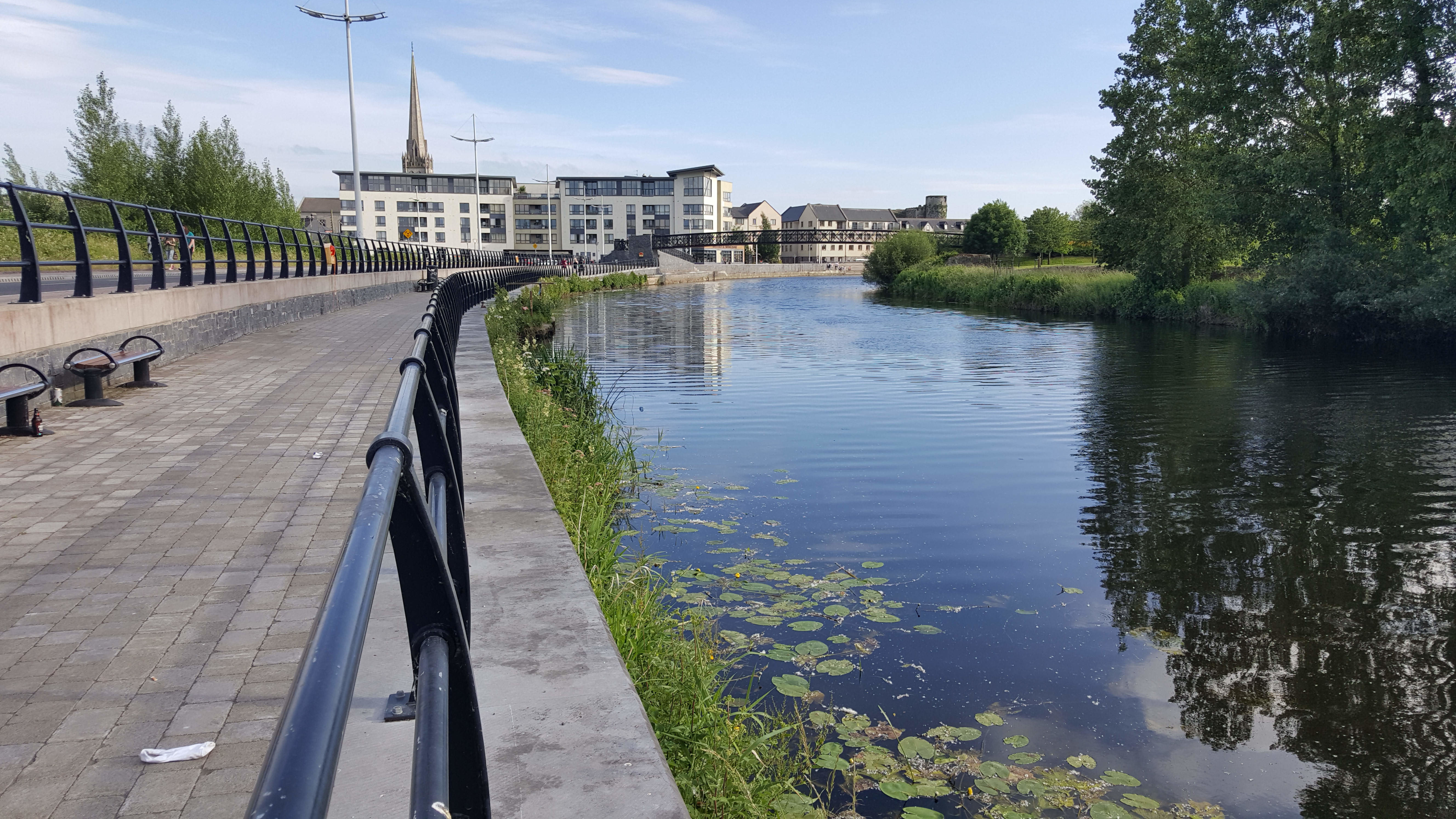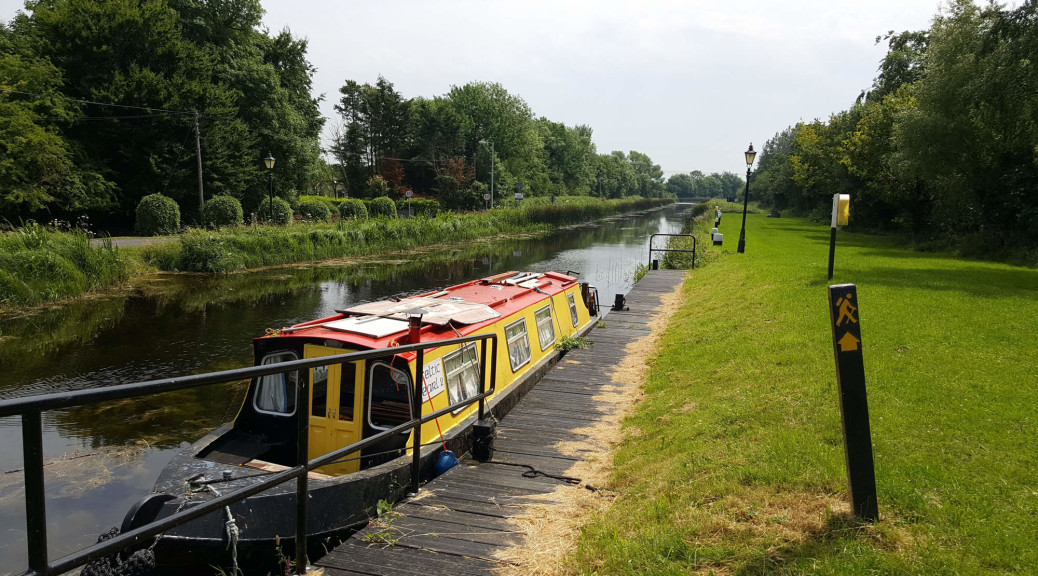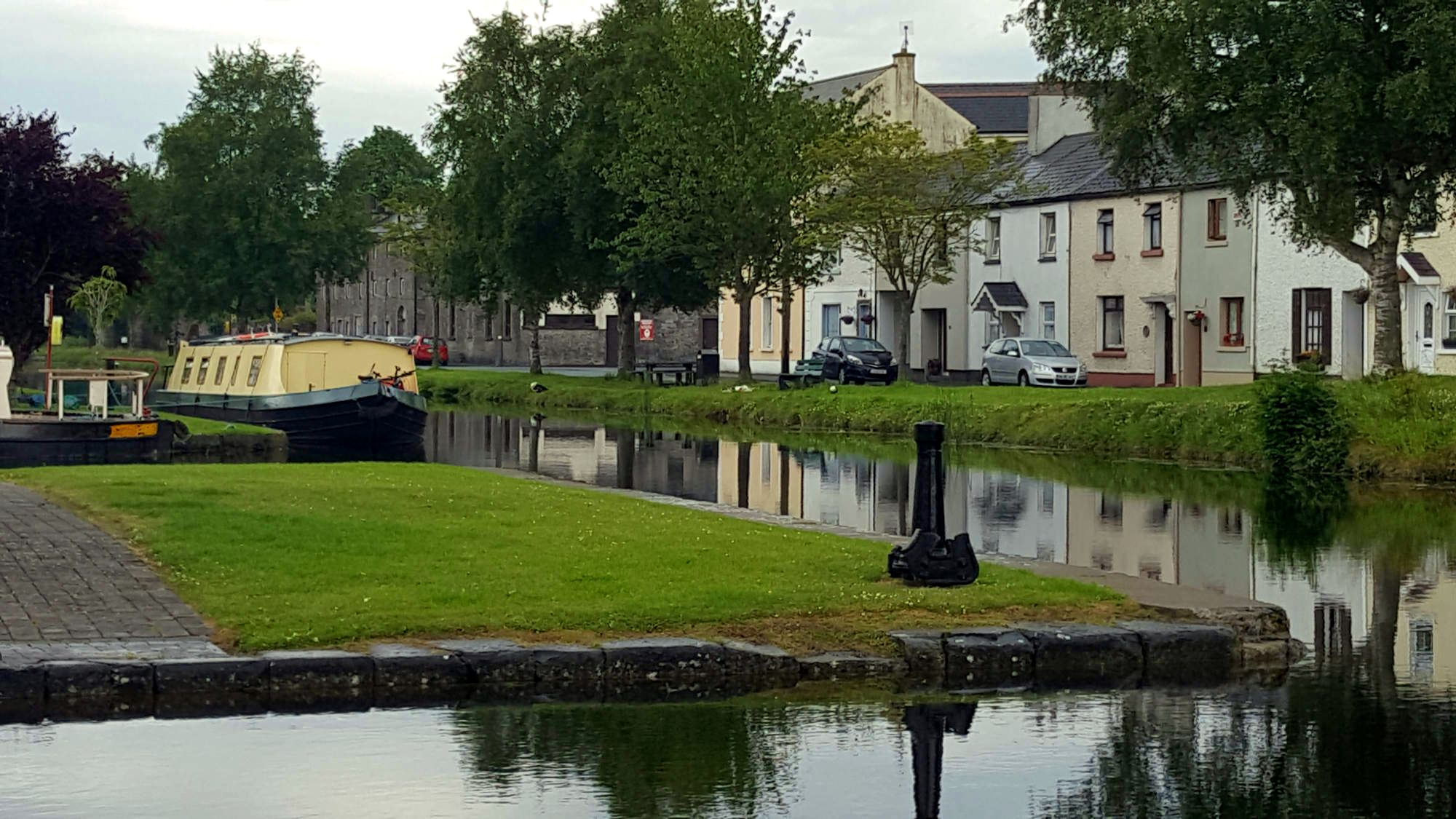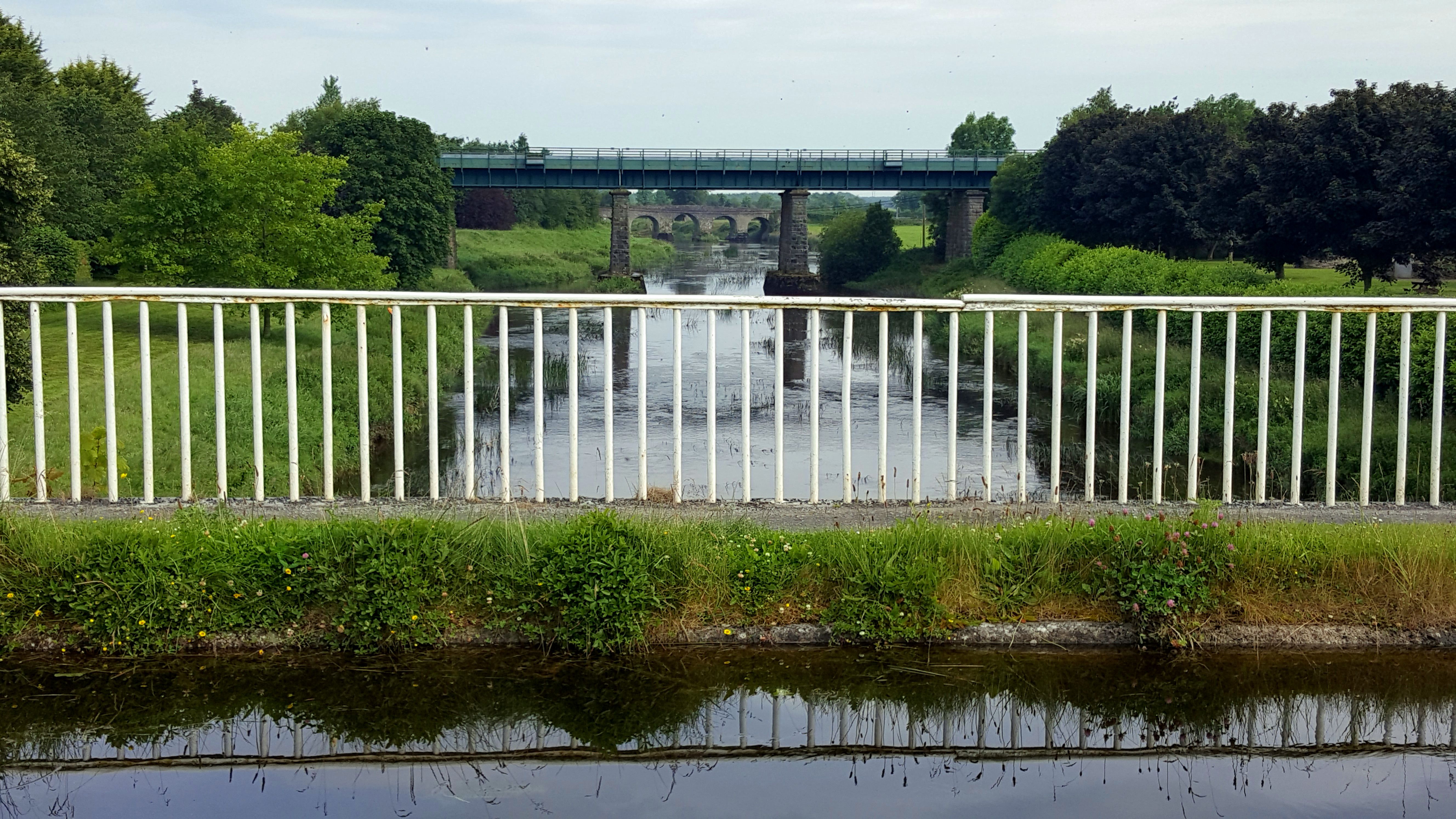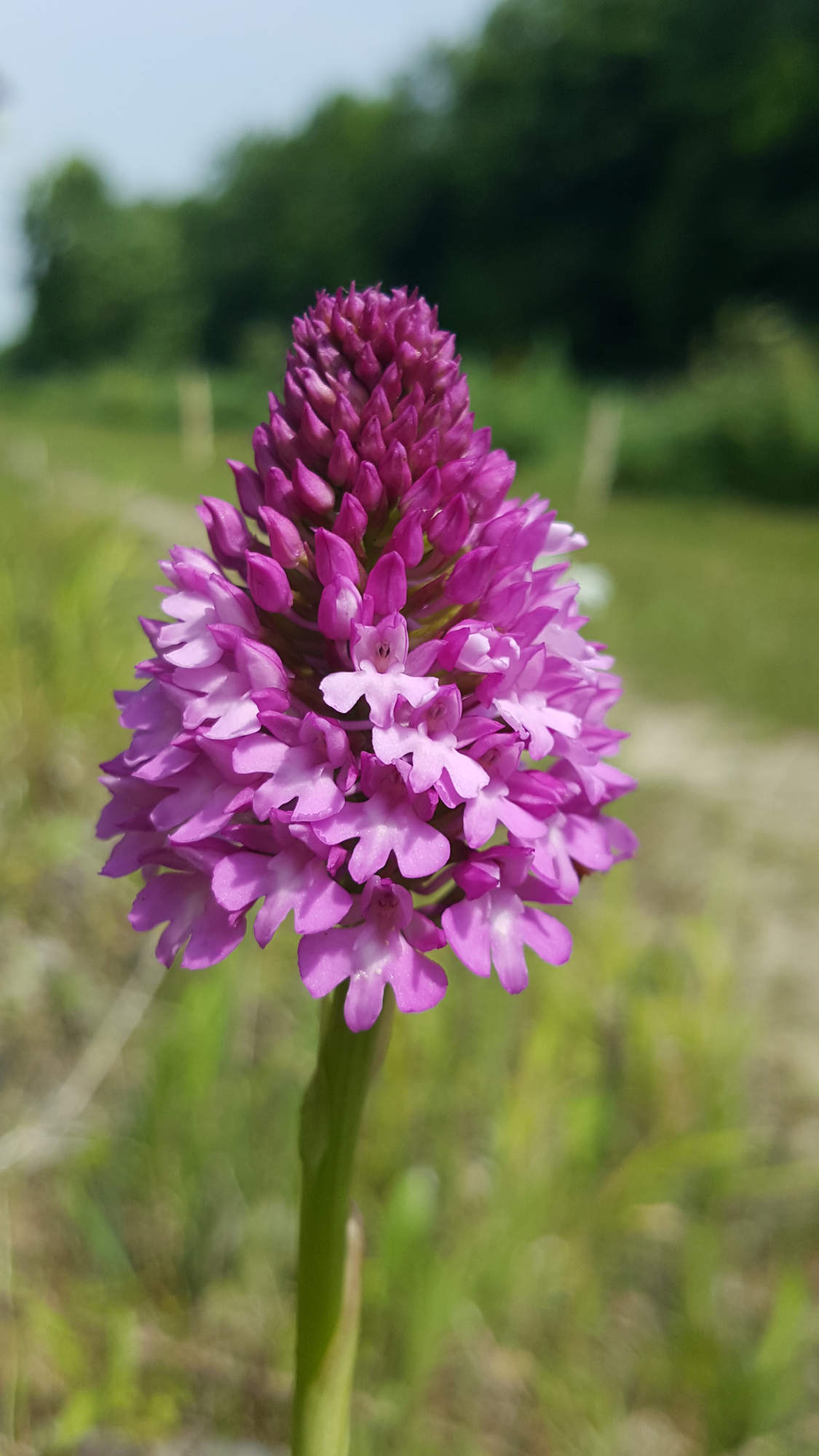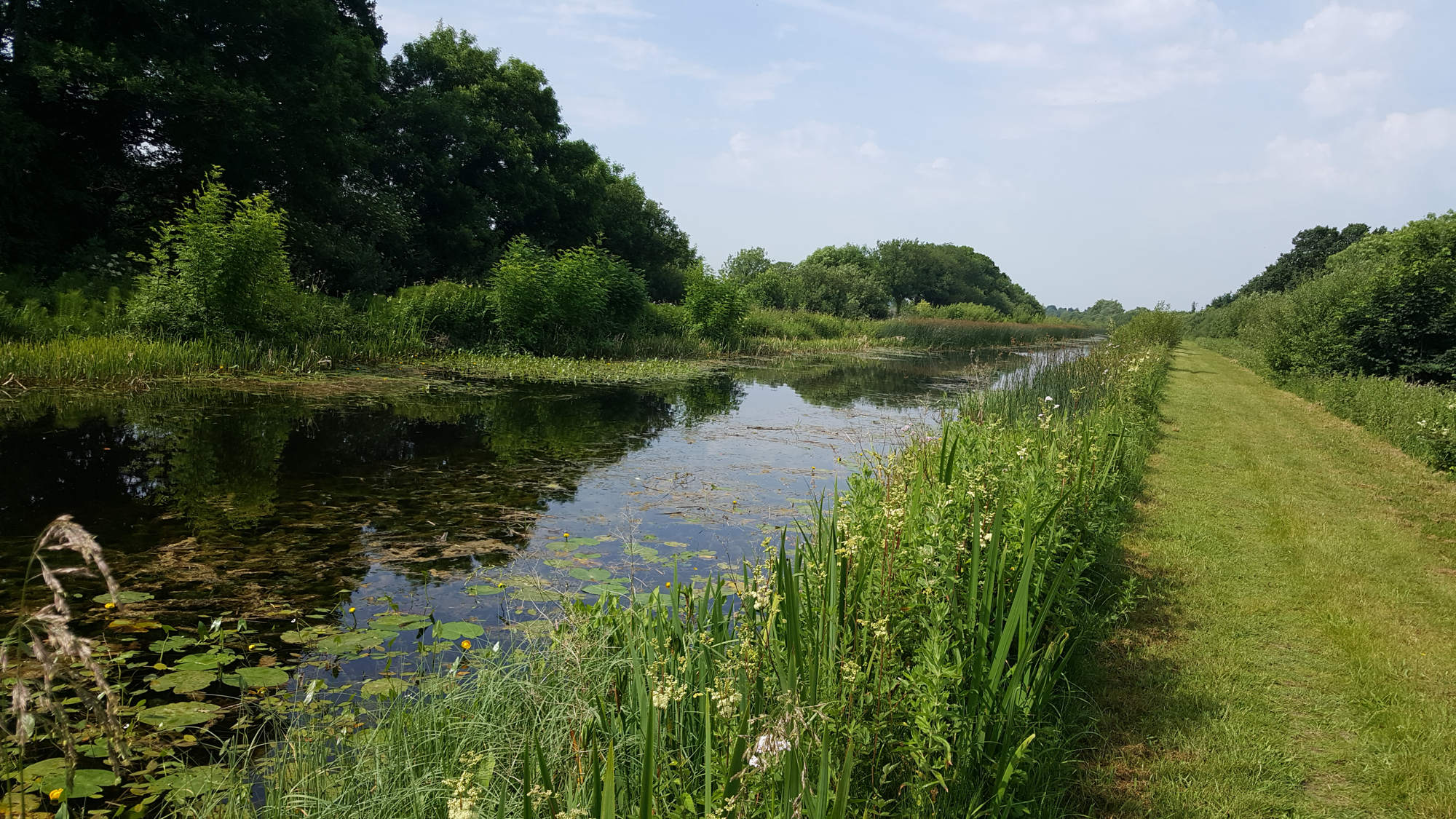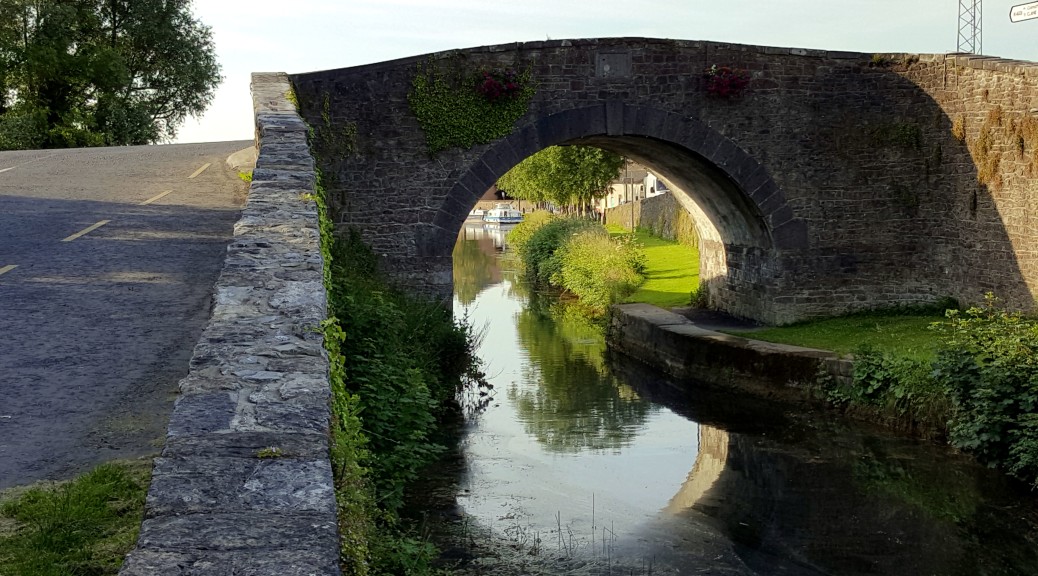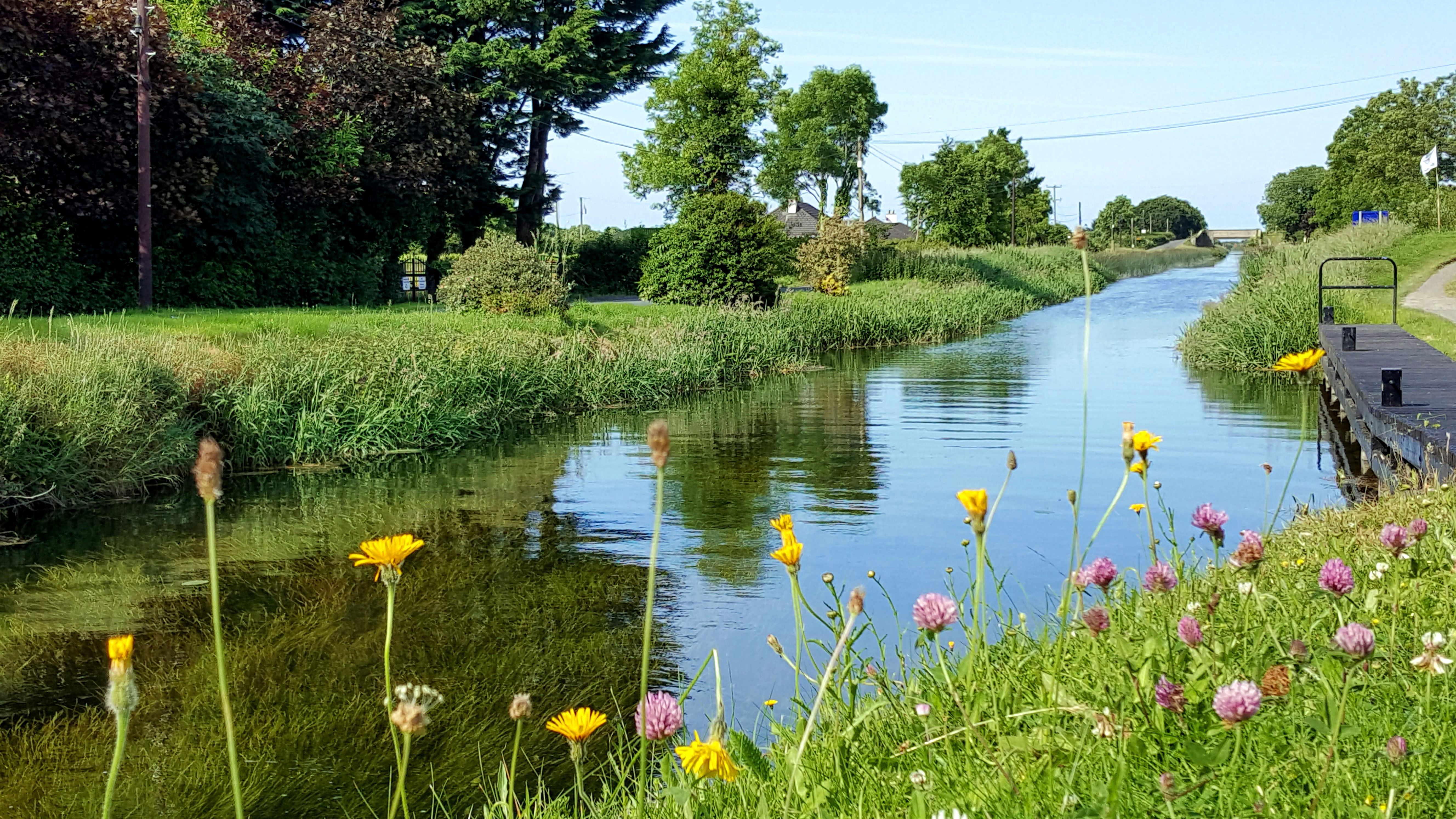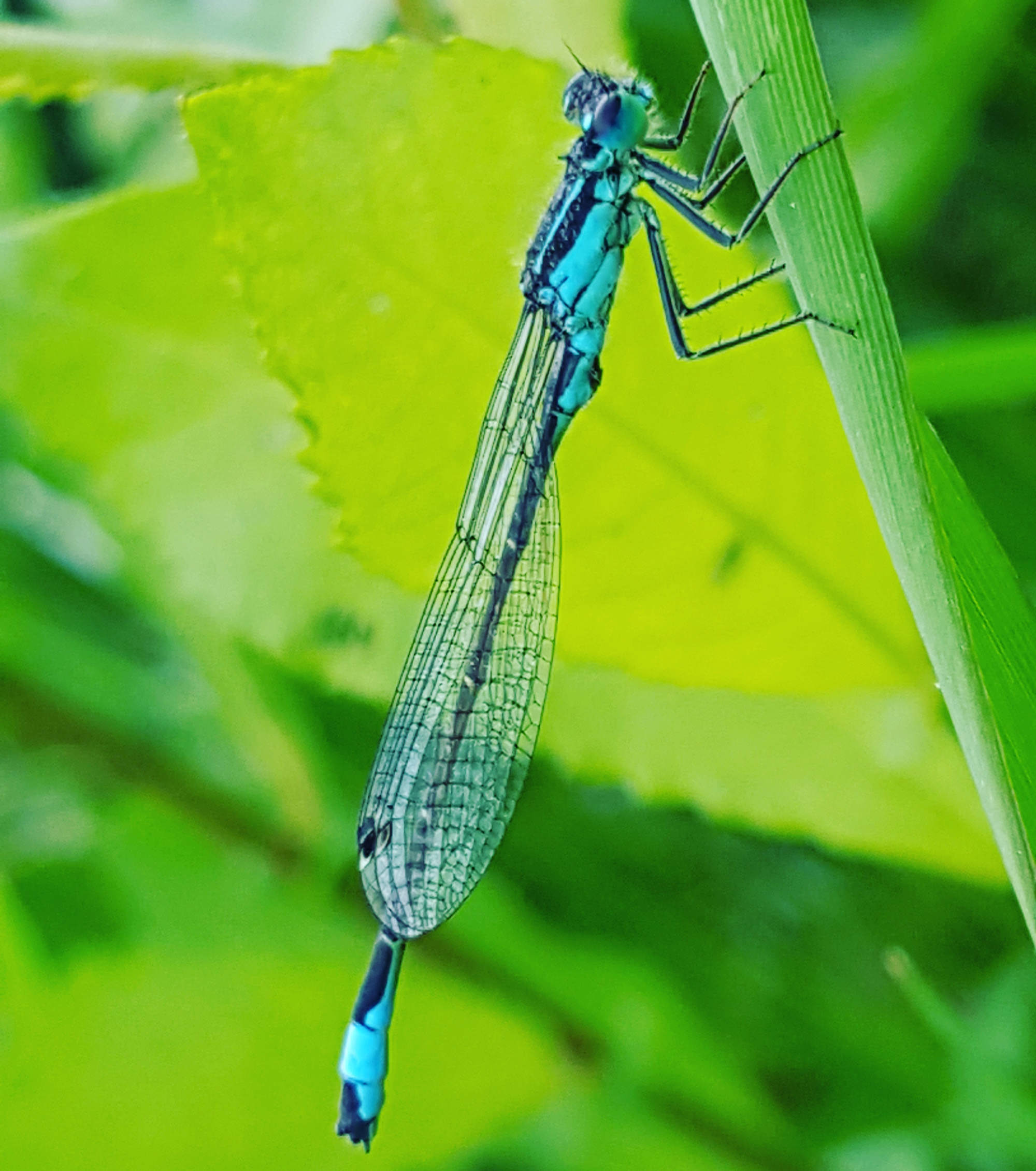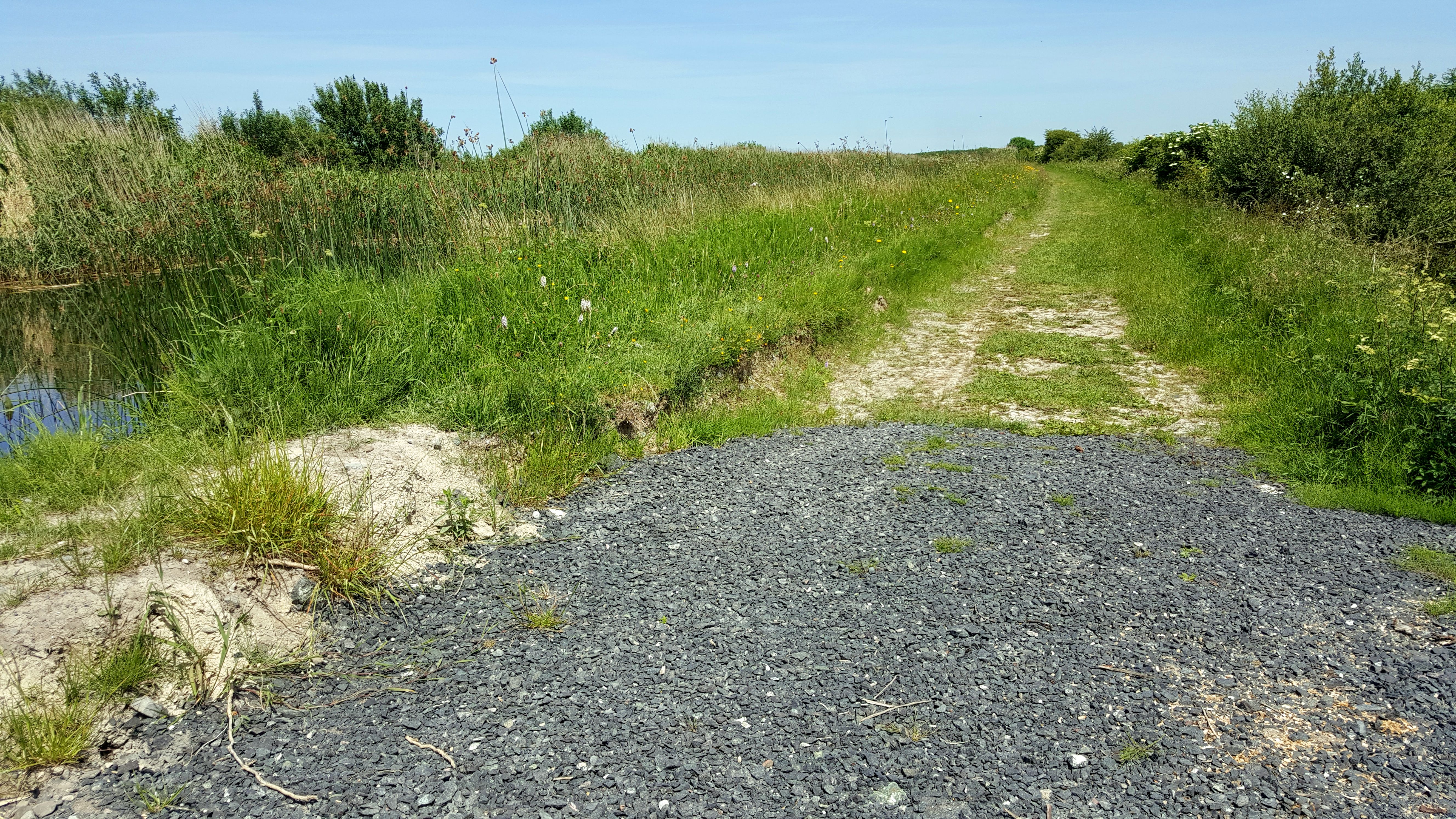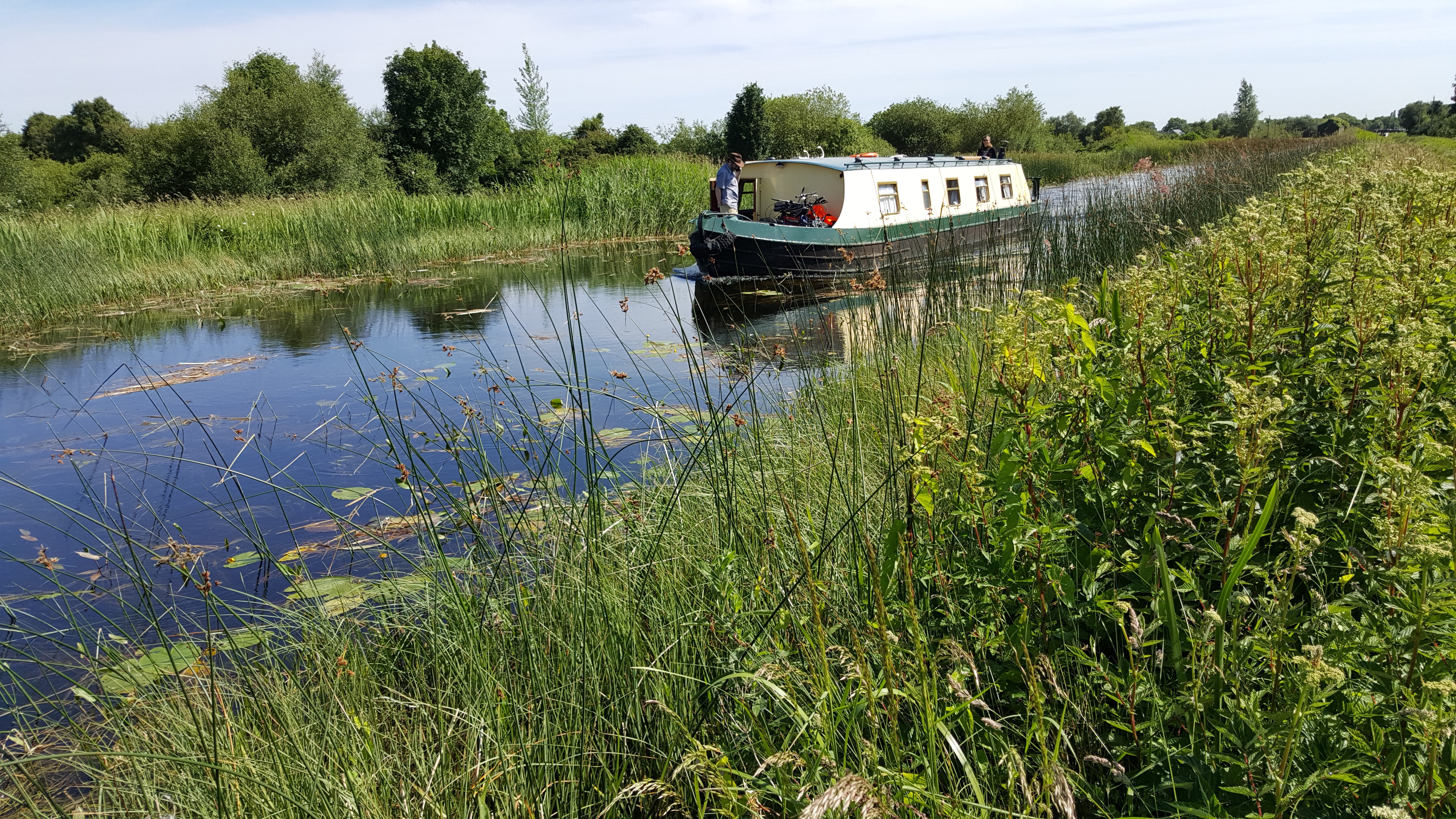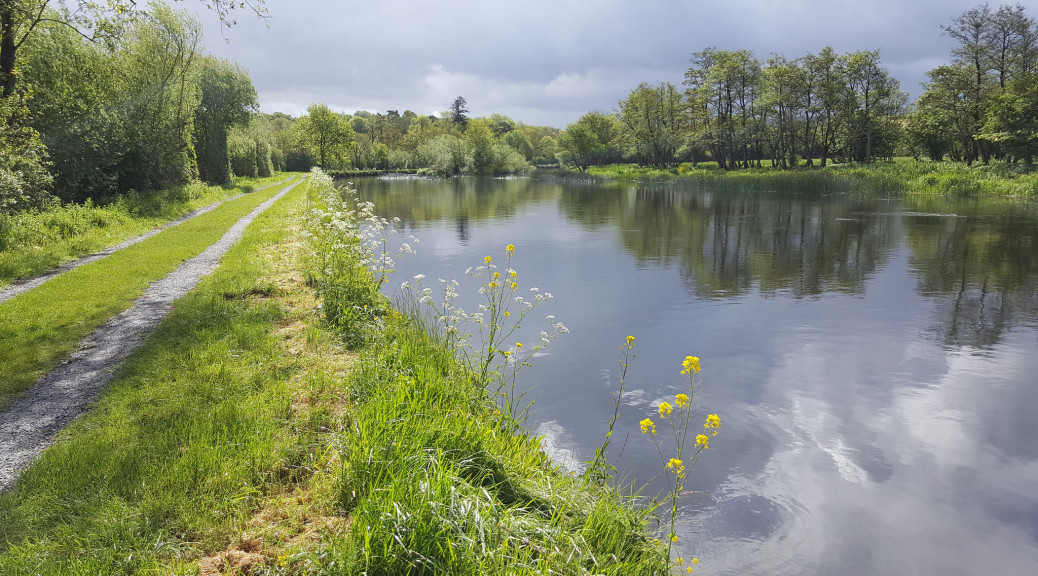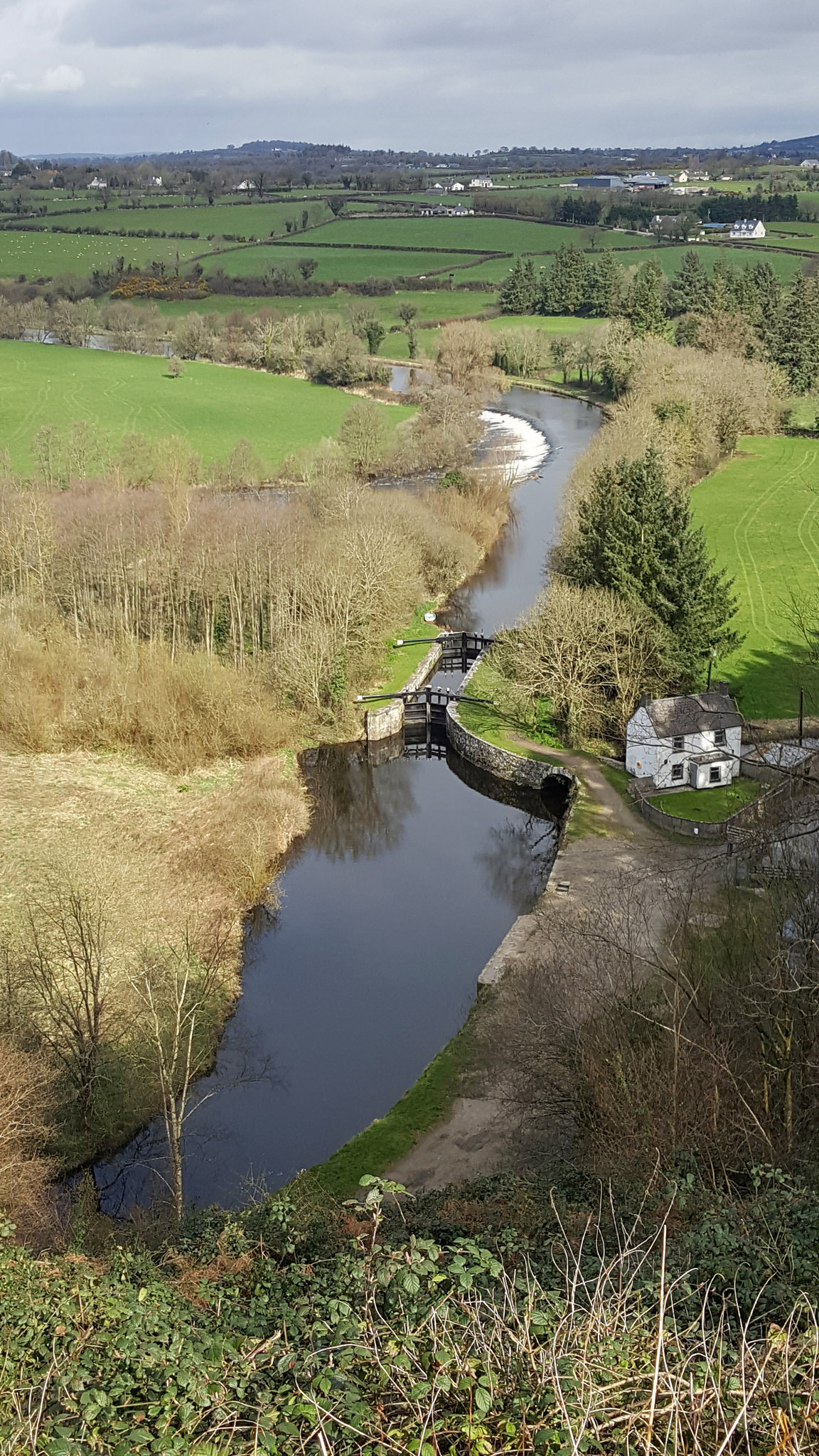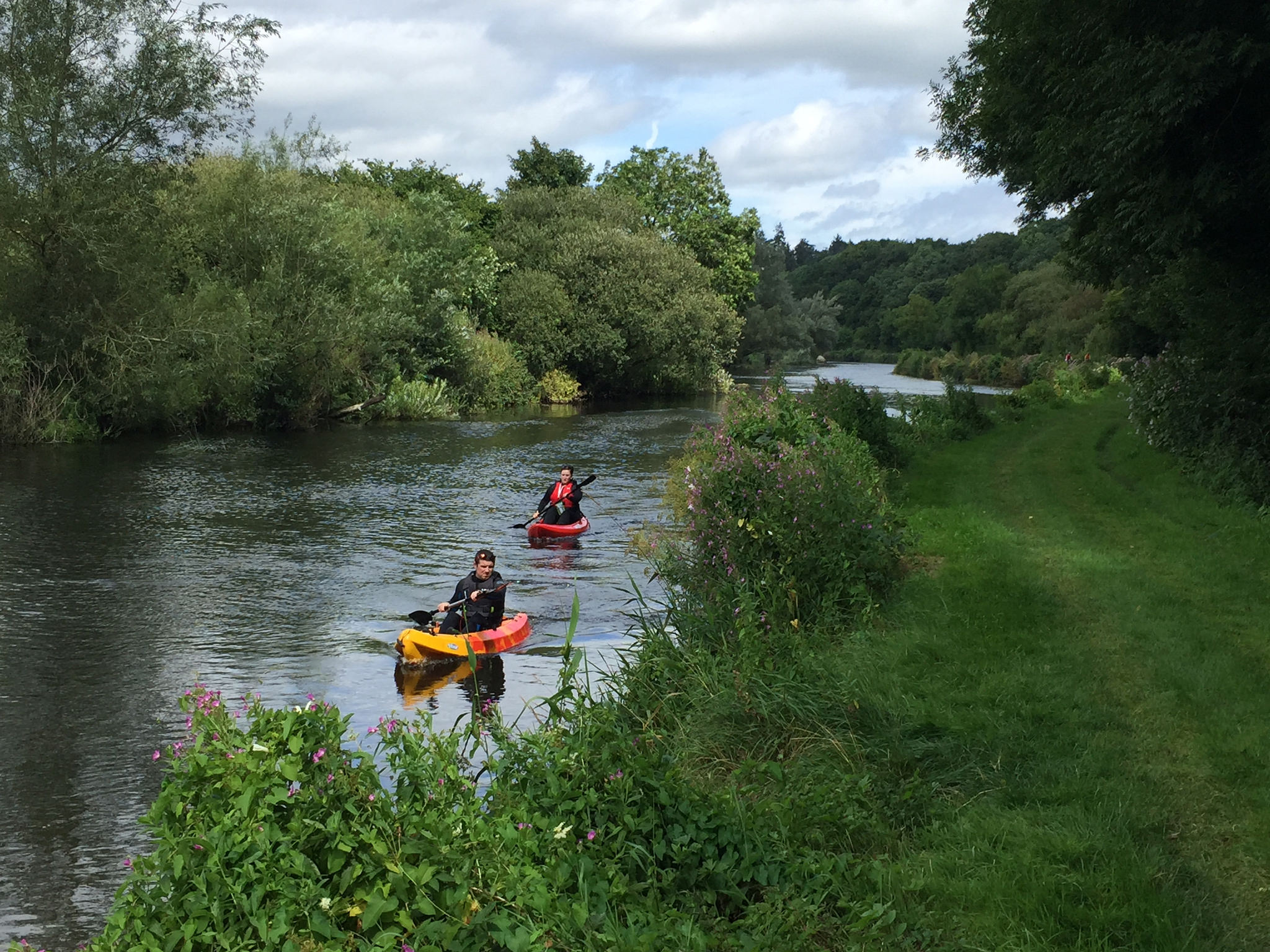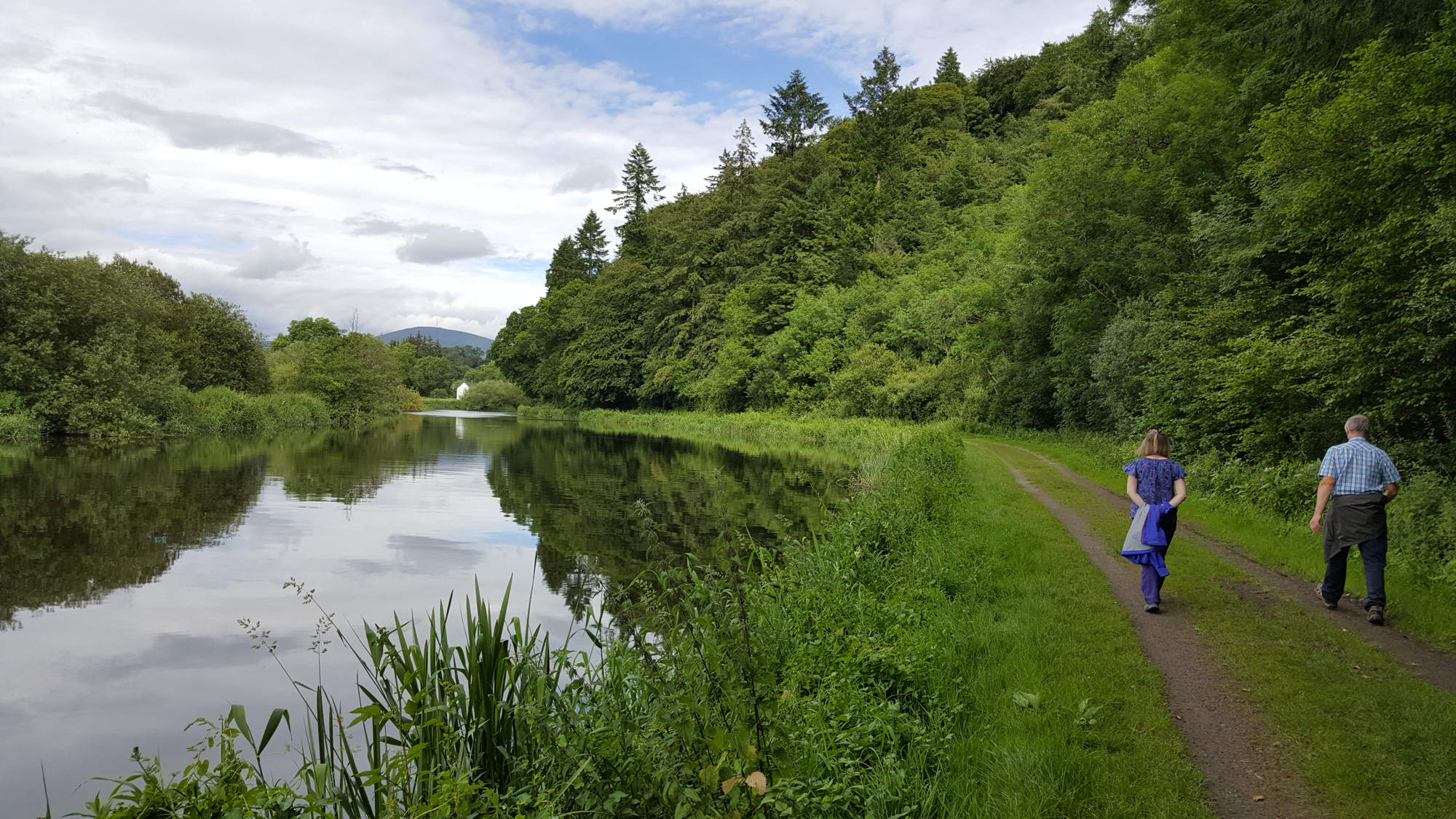
Day 6 was a fairly short final section of the Barrow Towpath from Clashganny to St. Mullins, a distance of 13km. Clashganny is another lock gate in a picturesque setting, but it differs from the others as excellent facilities have been provided here for users of the river. Lifeguards are on duty for the summer months, and there is a block of newly developed changing rooms and toilets for the visitors. Consequently, the area is a popular site for day trippers, and campers over the summer weekends. When I arrived mid-afternoon of a Sunday, the area was quiet again, but a smouldering fire and way too many empty alcohol bottles strew about, suggesting that it was not so quiet into the early hours of the previous night.
A couple of kilometres south of Clashganny I saw two freshly emerged comma butterflies basking in the coolish afternoon to capture the maximum of warmth. Comma are now well established along the towpath in the area, yet is always a delight to see them. I also was greatly entertained by watching the queue of boats using the lock gates at Fenniscourt, to navigate up the river. You wouldn’t want to be trying to get anywhere in a hurry!
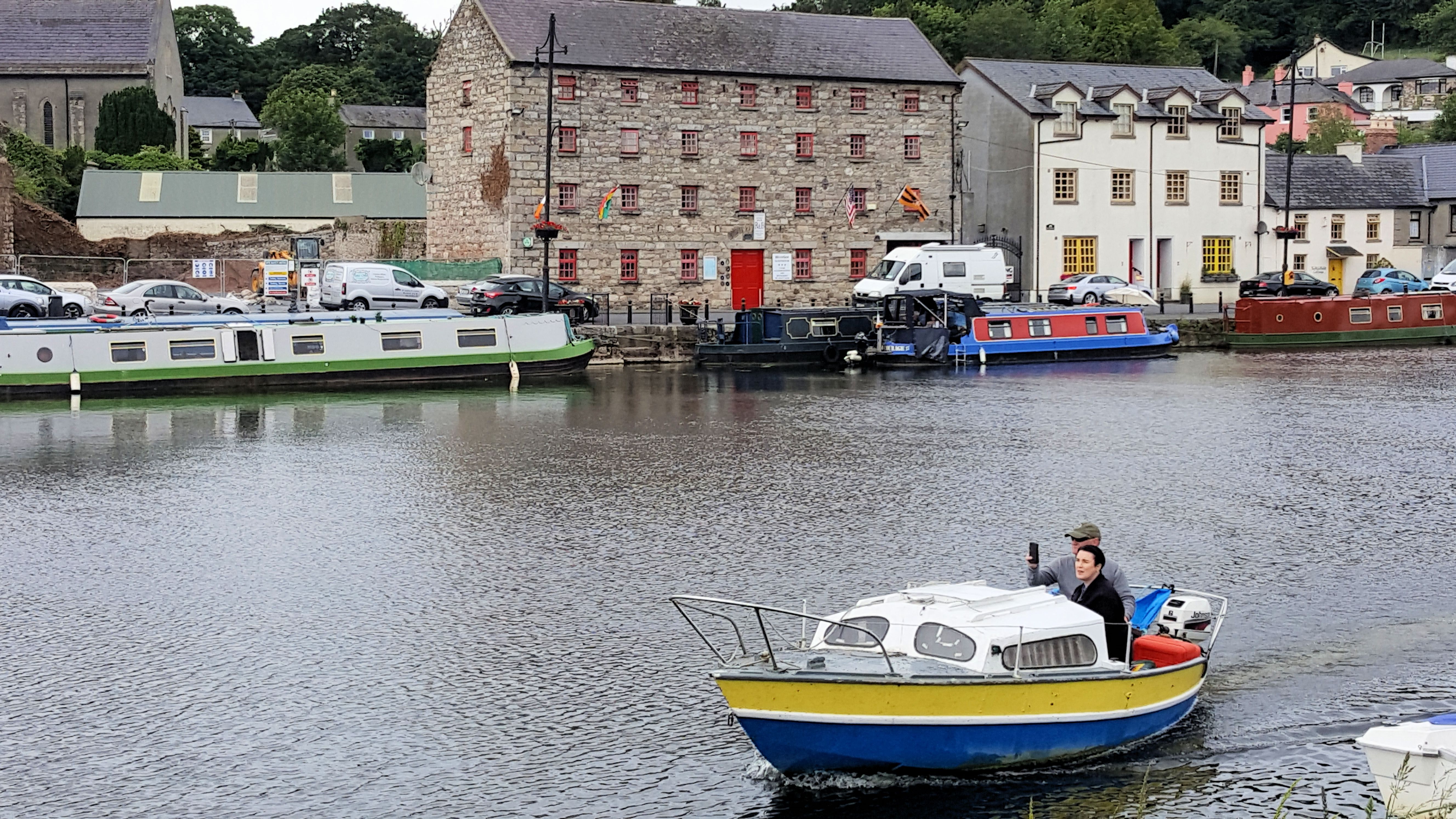
A short walk brought me to the beautiful village of Graiguenamanagh – a really picturesque village which, at first sight, seems to have everything going for it. A beautiful waterfront with plenty of moored boats, impressive façade of the Riverside Guesthouse reflected on the river, a magnificent 7-arch bridge and the backdrop of Brandon Hill makes this special. However, I know this gives a somewhat misleading impression for Graiguenamanagh like other villages in the vicinity is struggling to sustain or expand the local economy. There can be no doubt but the development of the towpath to accommodate cyclists would provide a huge injection of visitors and revenue for Graiguenamanagh. But the question remains, does this alone justify the radical altering of character of the Barrow Towpath? Or could the aggressive marketing and promotion of walking and other river-based activities also generate the same level of economic development, without destroying the character of the towpath?
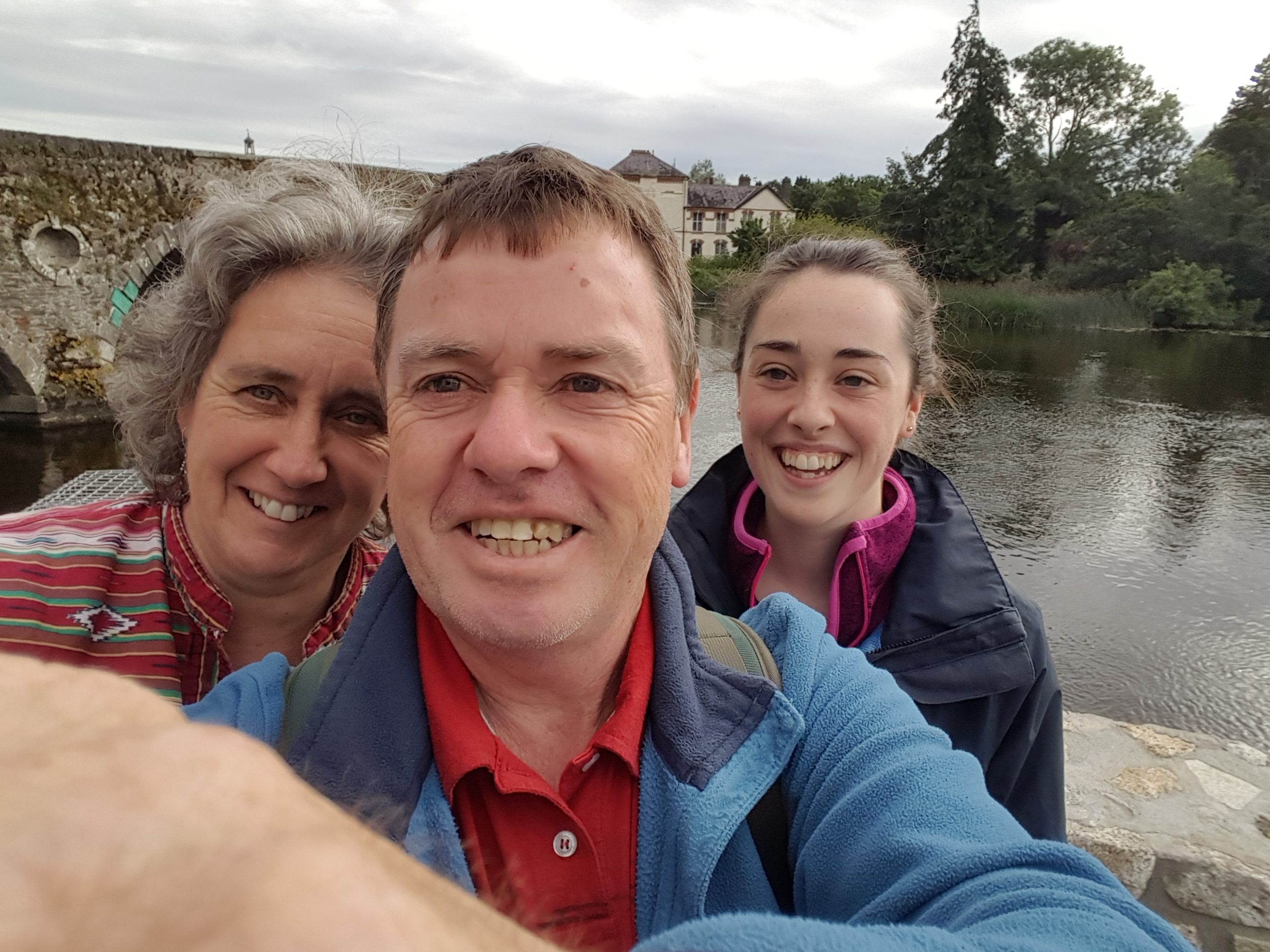
I was delighted to be joined in Graiguenamanagh by my wife Josephine and daughter Bella, for a coffee. Bella wanted to walk with me on the final stretch of the towpath down to St. Mullins, and it was great to have her company. We chatted, stopped to photograph some damselflies and admire some of the beautiful cottages along the river, and when we finally got into our stride, walked far quicker that I was used to – arriving in St. Mullins in no time at all. The river at St. Mullins is tidal, and when we arrived the tide was exceptionally high, so high in fact that we had to wide through water along the very last section of the path getting our feet (and in my case, boots) wet. That I walked over 130km along a waterway and stayed dry, yet managed to get my feet wet in the last kilometer probably has some significance, but if it does, it was lost on me!
So I spent six wonderful days walking the Barrow Line then the Barrow Towpath, seeing the route at its best in glorious weather. In the six days I covered 133km and traversed a good cross-section of the east of Ireland, through beautiful landscapes rich in heritage, both built and natural. I experienced at first hand the wonderful amenity of the Barrow Track and had plenty of time to think about the merits of the development proposed by Waterways Ireland.
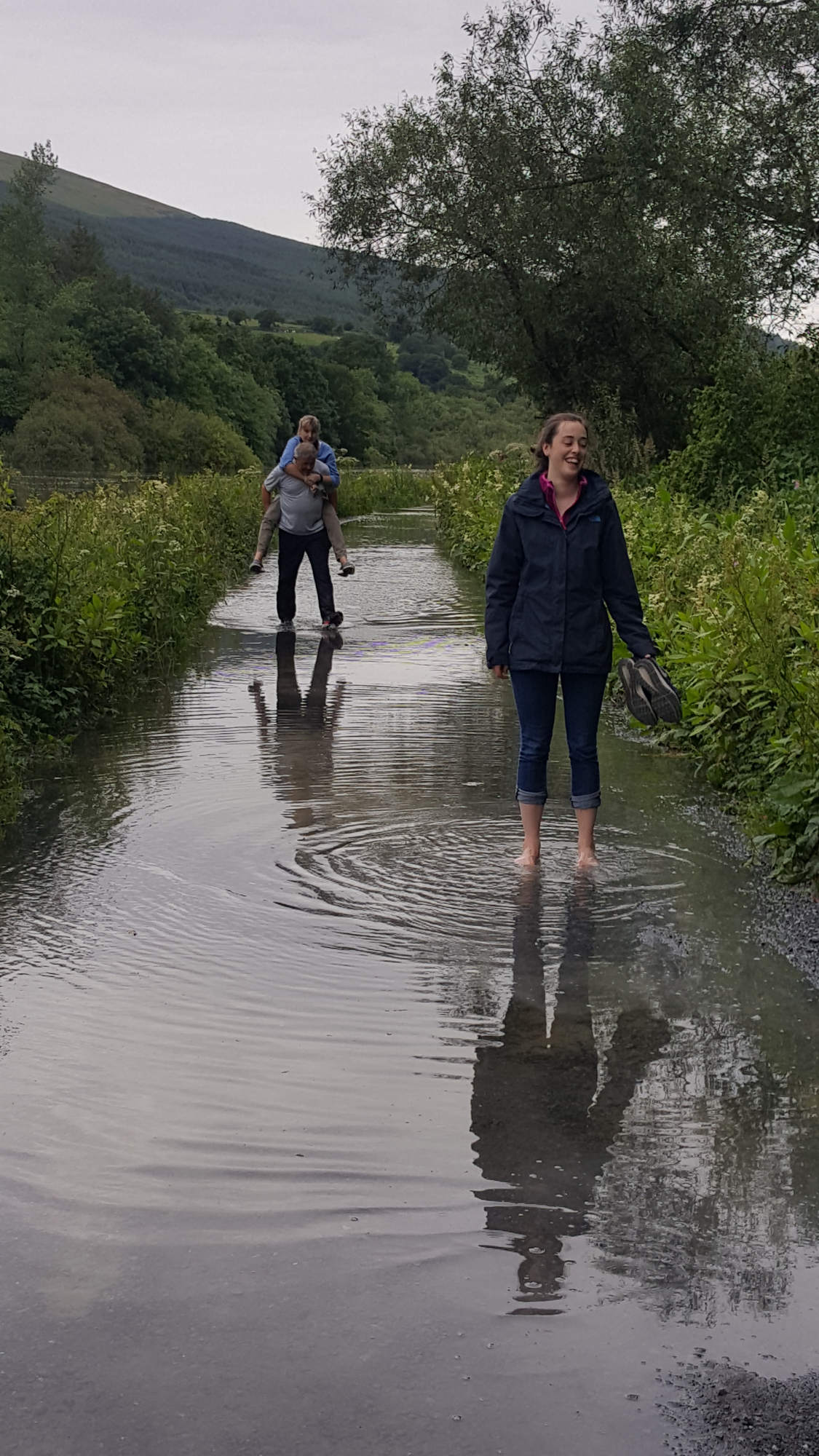
There can be no doubt but the Barrow path is a wonderful amenity and one that should be cherished. Investing in it so that the experience of users can be enhanced is a good thing to do, and should be commended and supported. God knows we need more, not less, investment in Ireland’s natural amenities. But that does not mean that any development or investment is automatically a good thing. My personal view is still that the removal of the grass towpath would be a terrible mistake for it is a special amenity and would potentially lead to environmental degradation. However, I think that a cycleway should be developed as far as Athy, but segregated from walkers by using the existing farm tracks and narrow roads rather than the grass track. The route then from Athy to St. Mullins should be developed and promoted for walking and other river-based activities that would enhance the unique experience of the amenity. Now that would make for a wonderful use of an amenity that could accommodate different interests, without any one use dominating the others.
I really hope that when the merits of the proposed development are being adjudicated upon by decision-makers that the views of all the different sectors are taken seriously, and that the existing non-monetary benefits of the amenity are properly recognised. For if the wrong decision is made, there will be no turning back.
